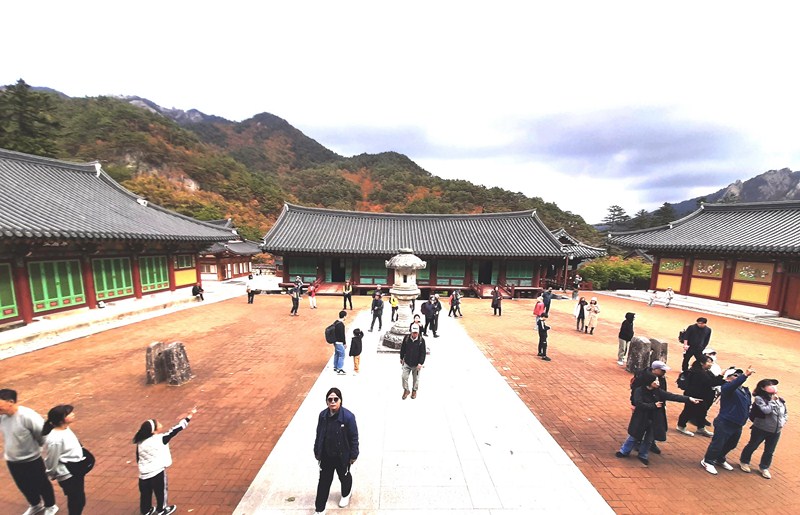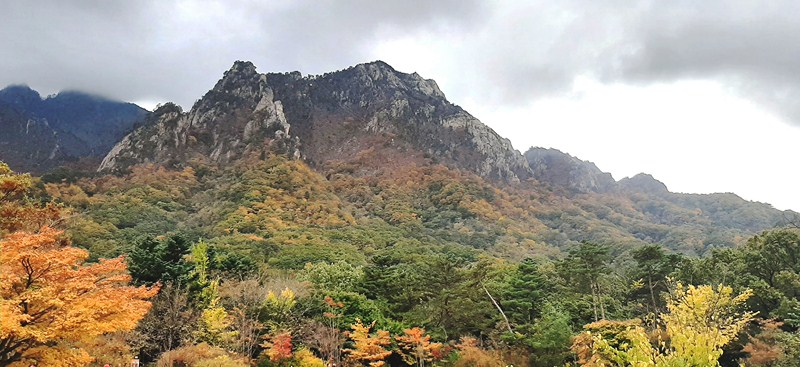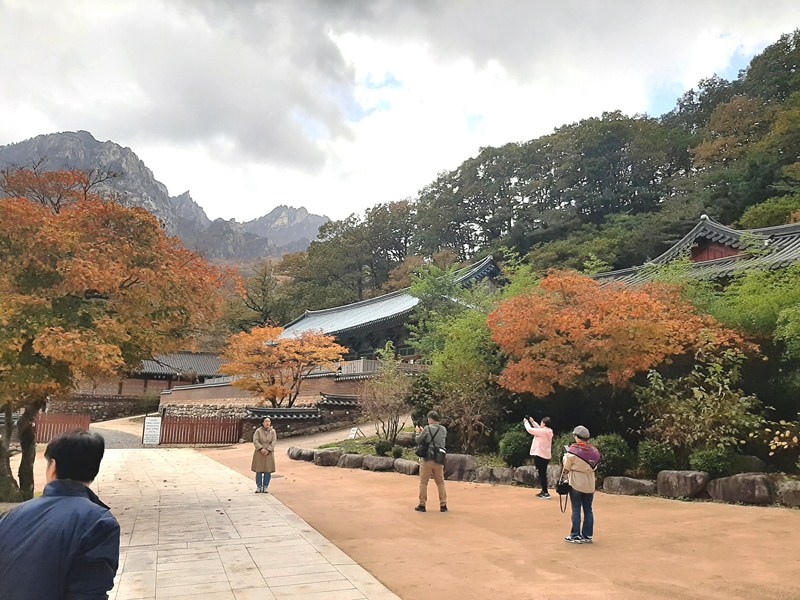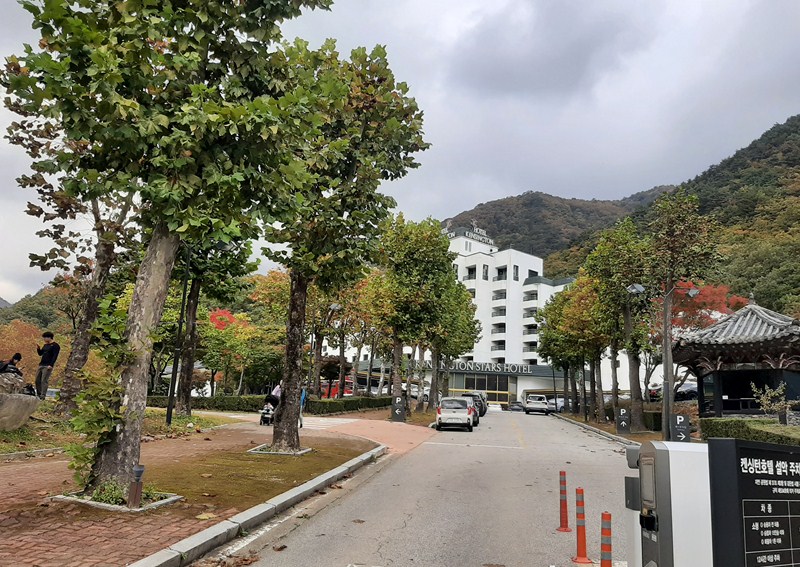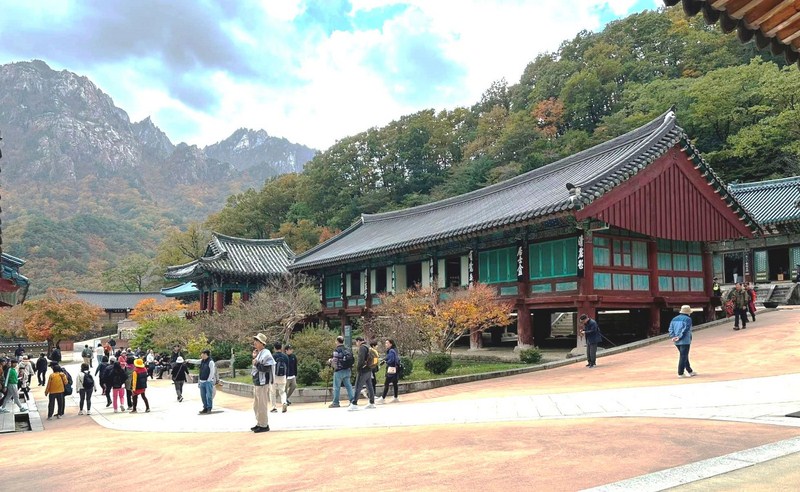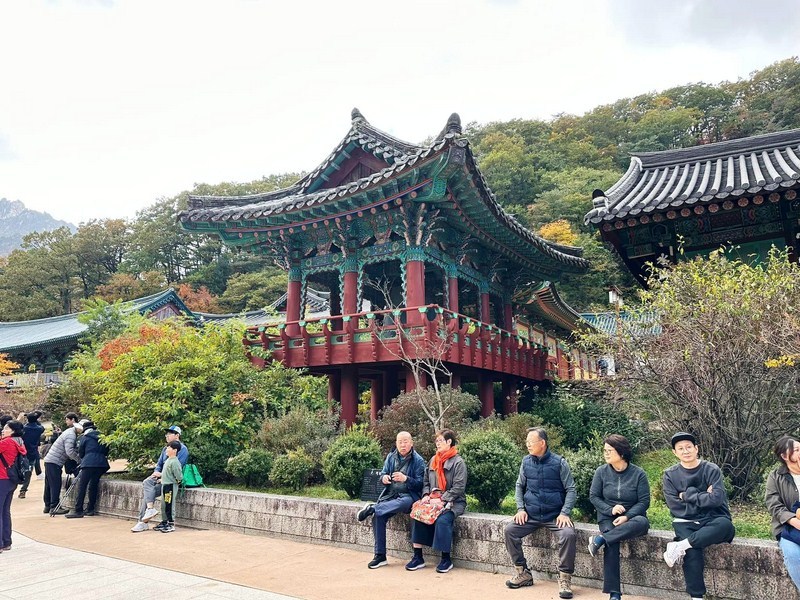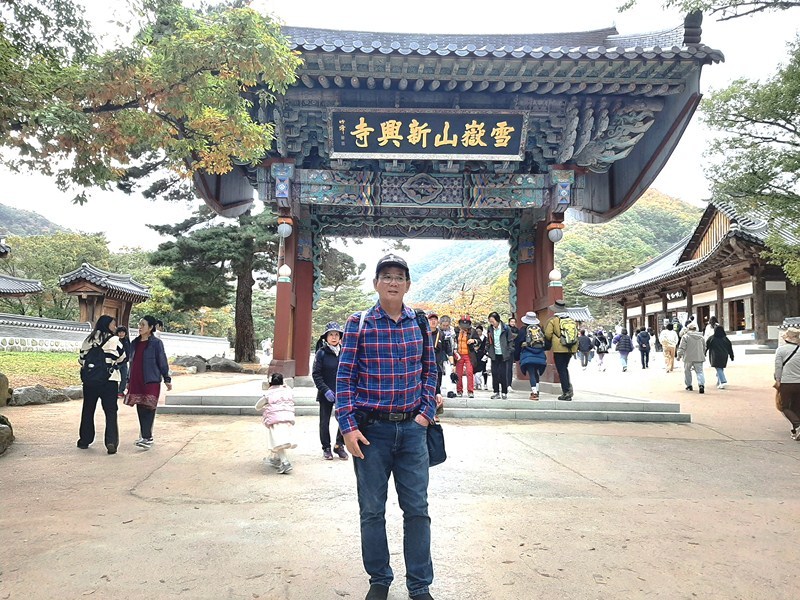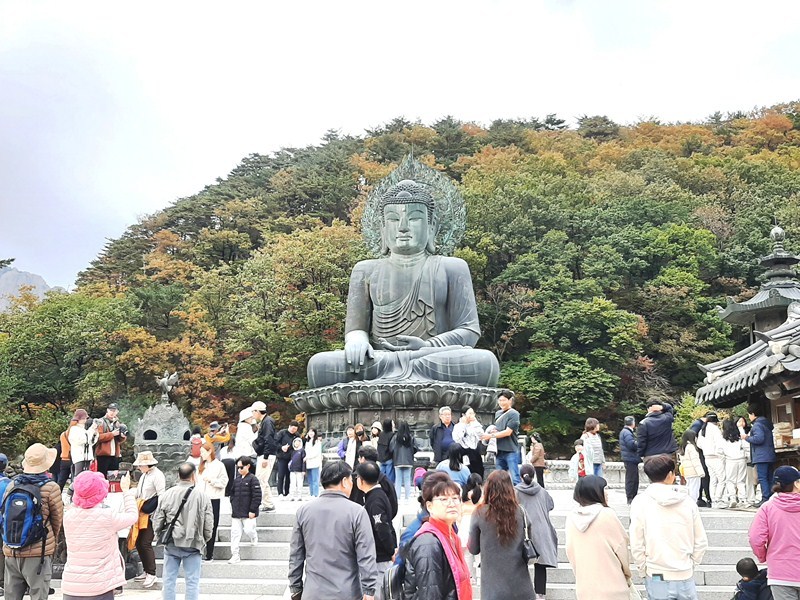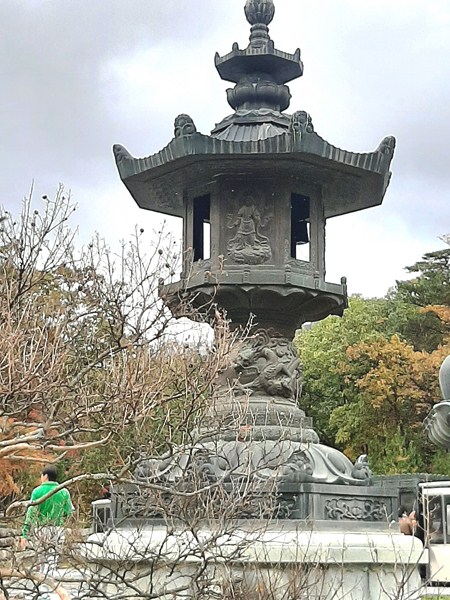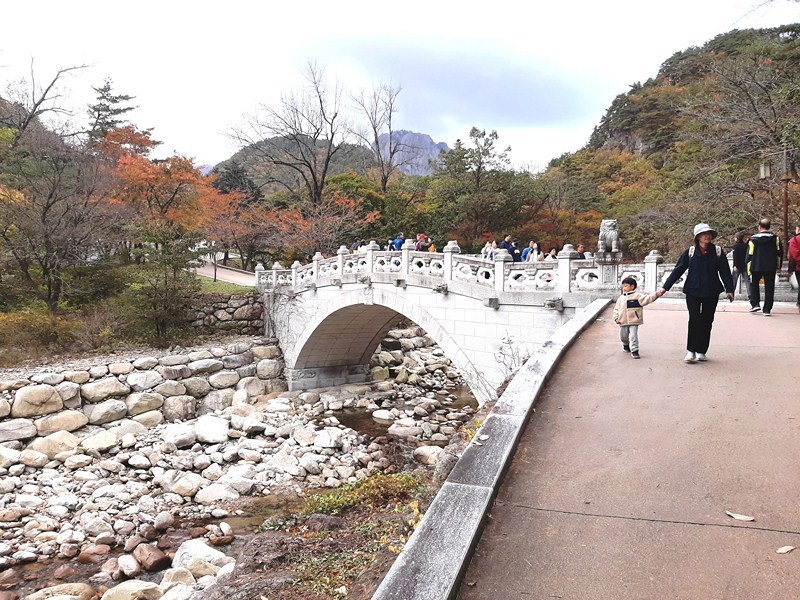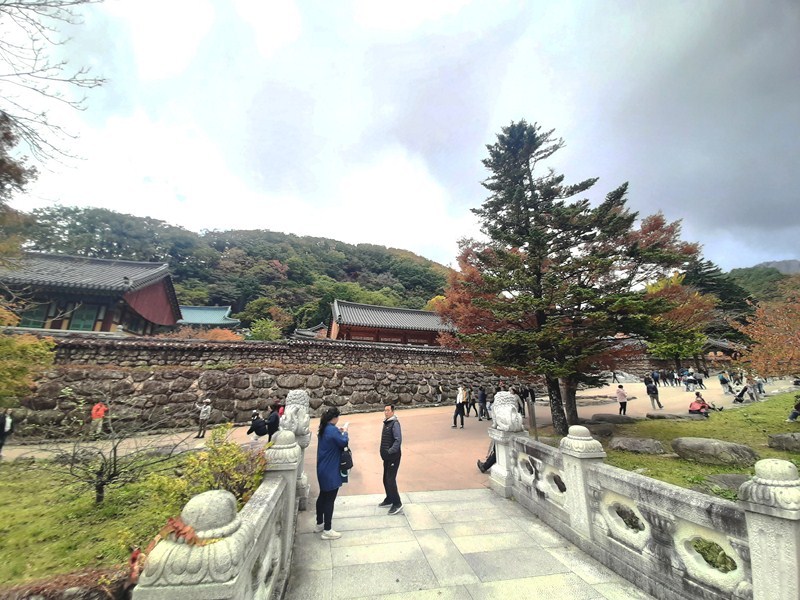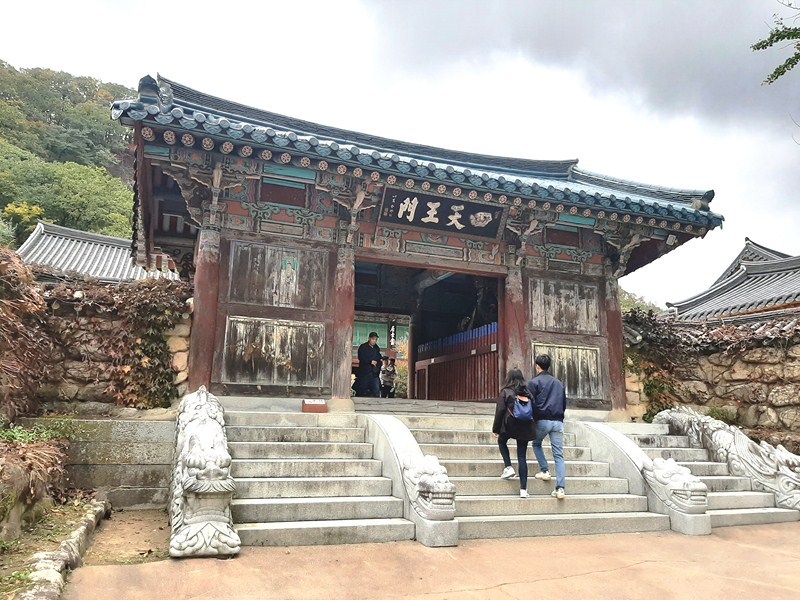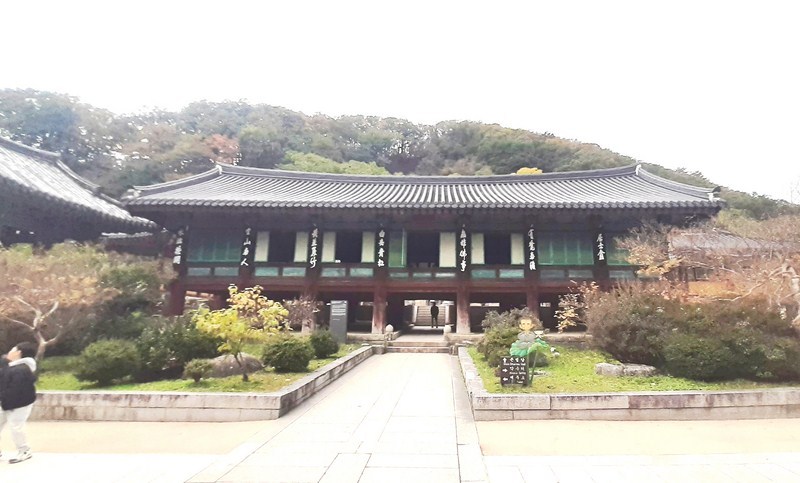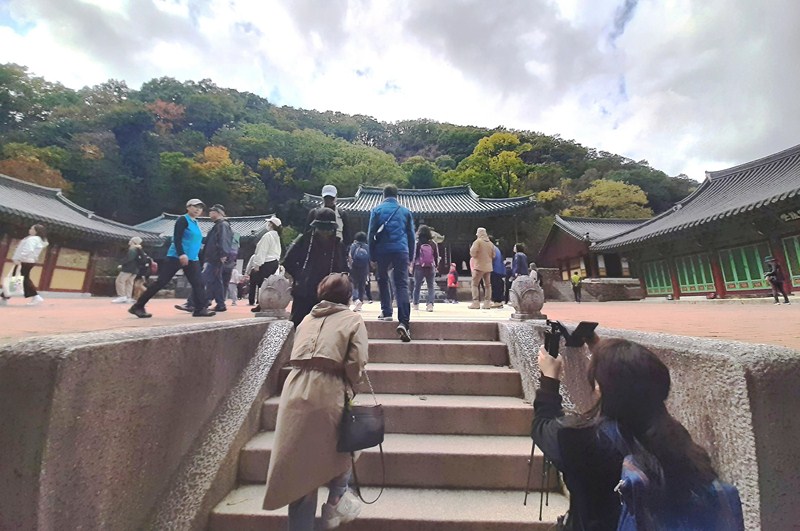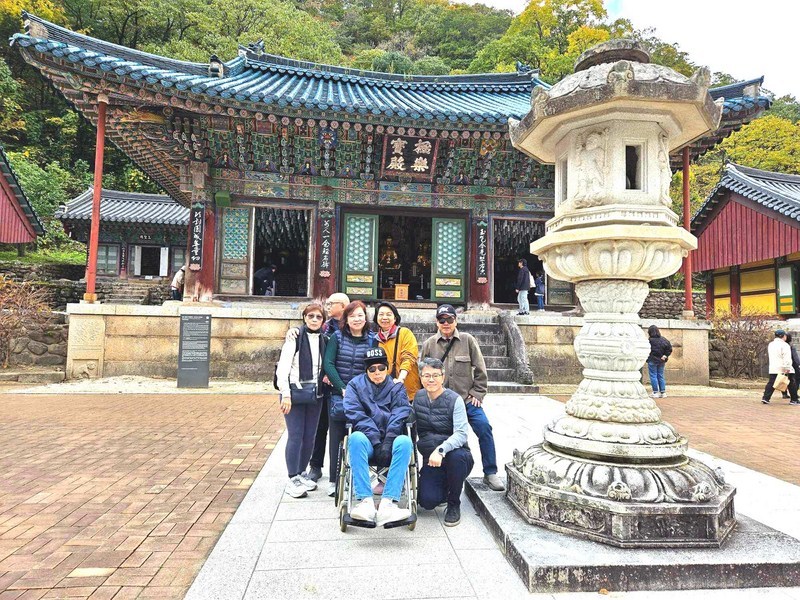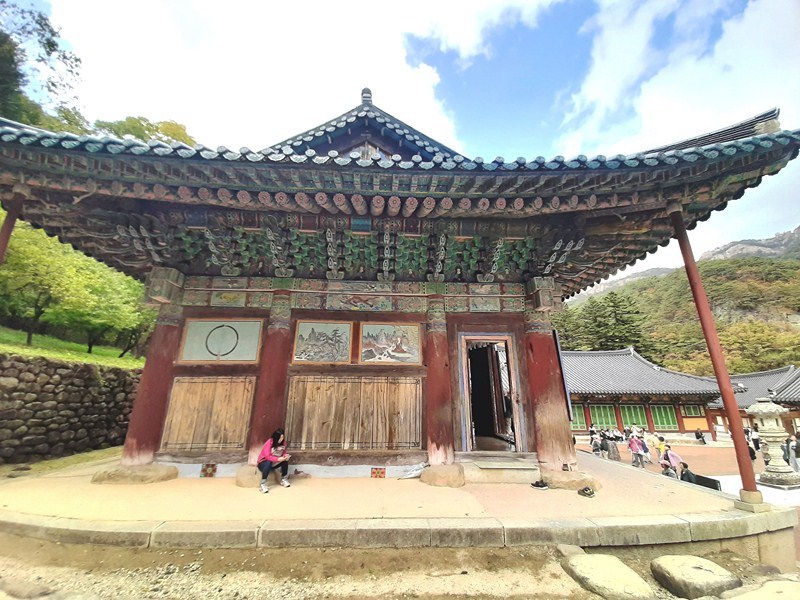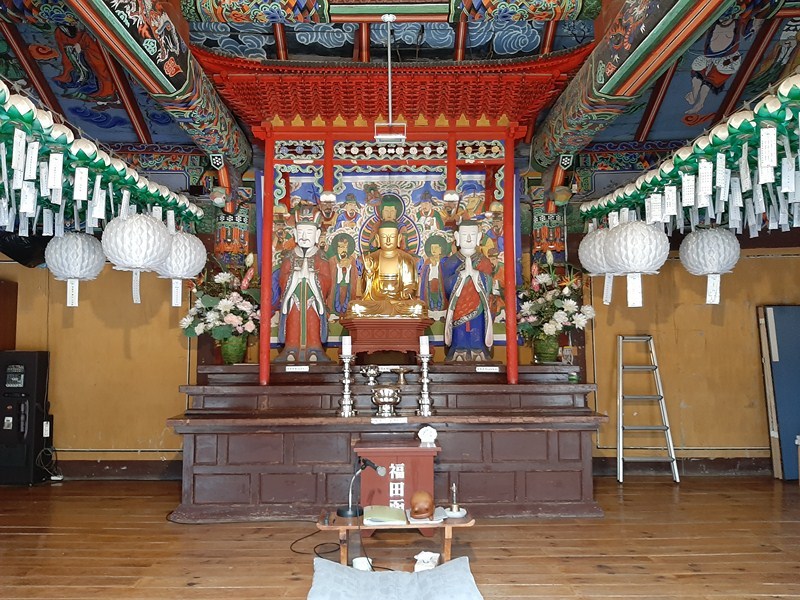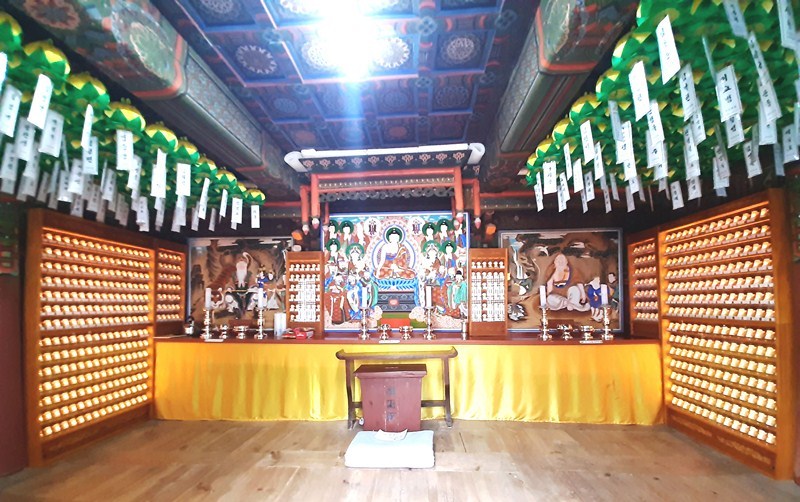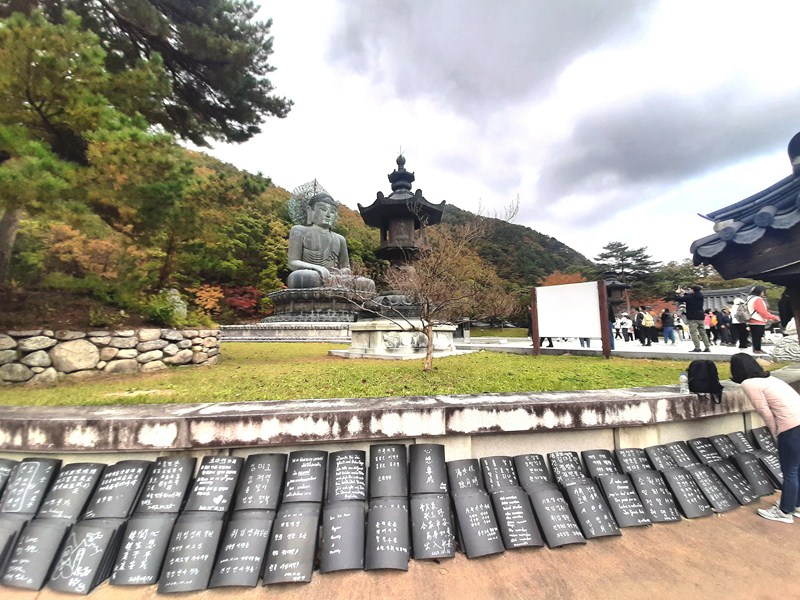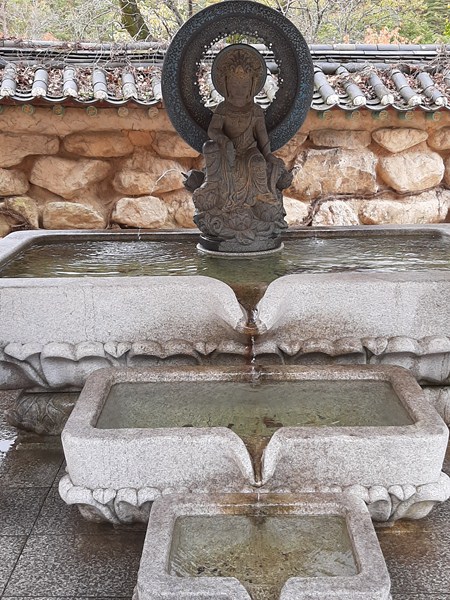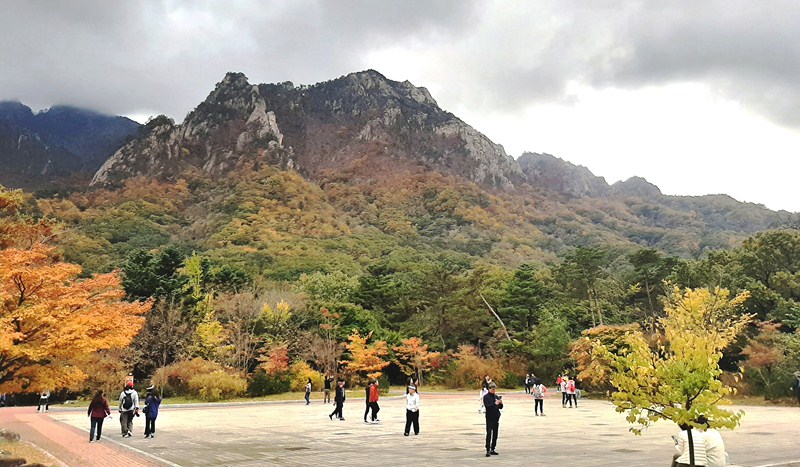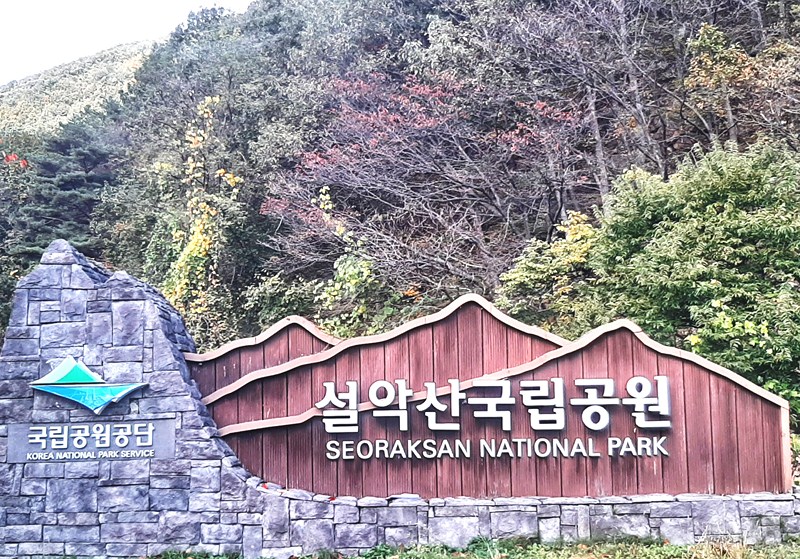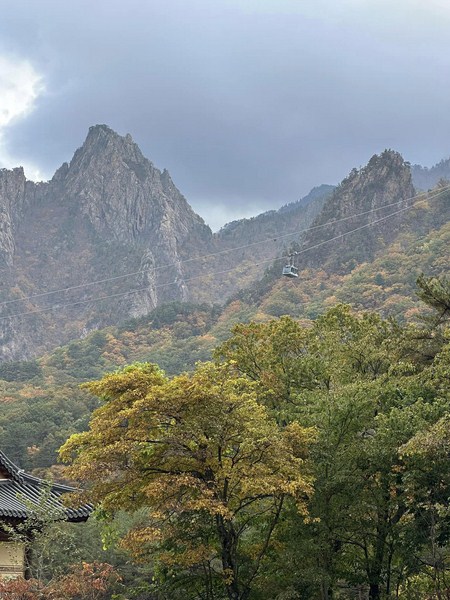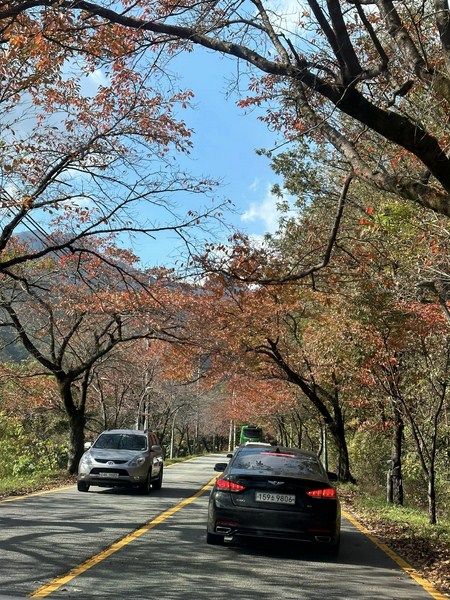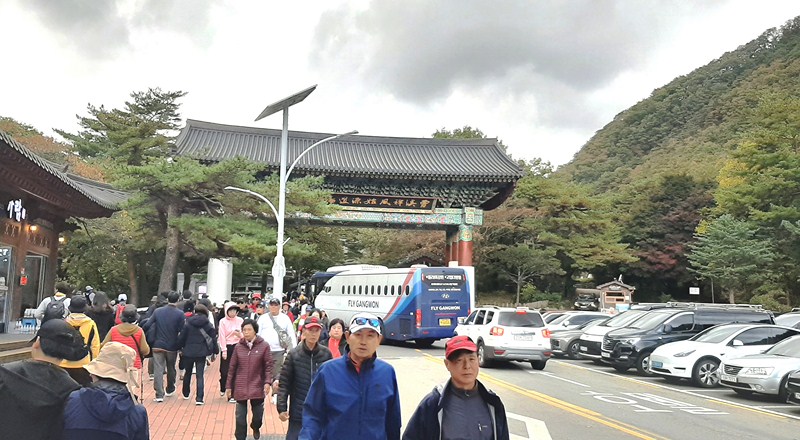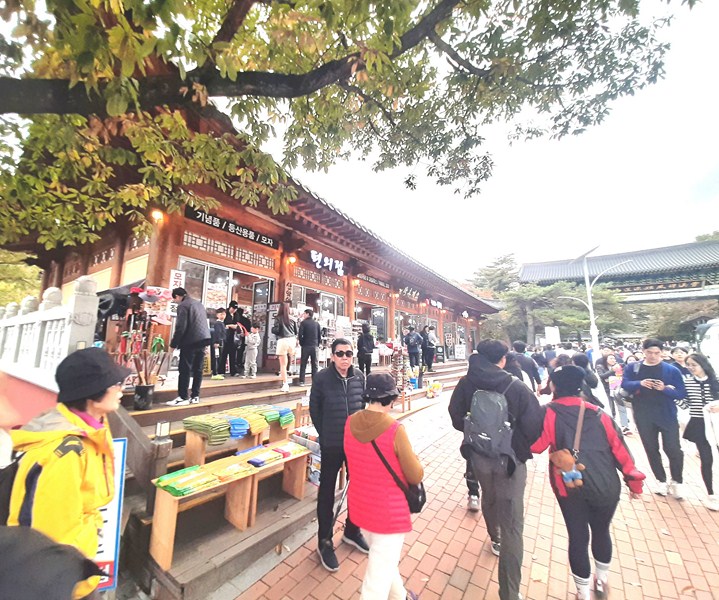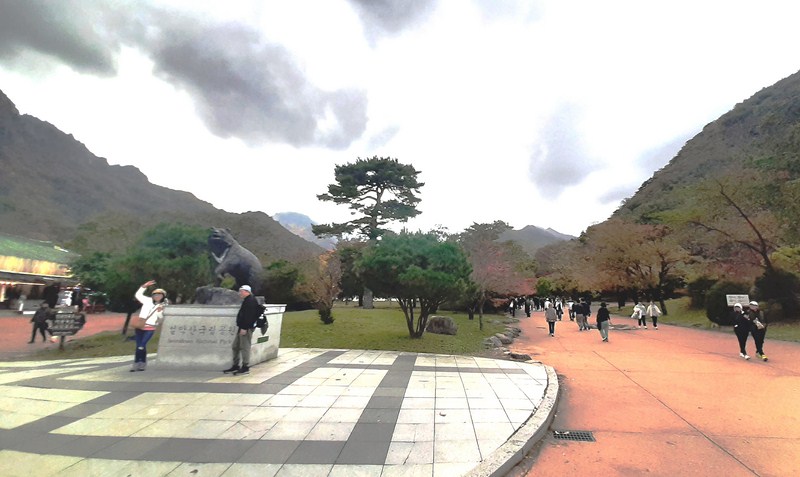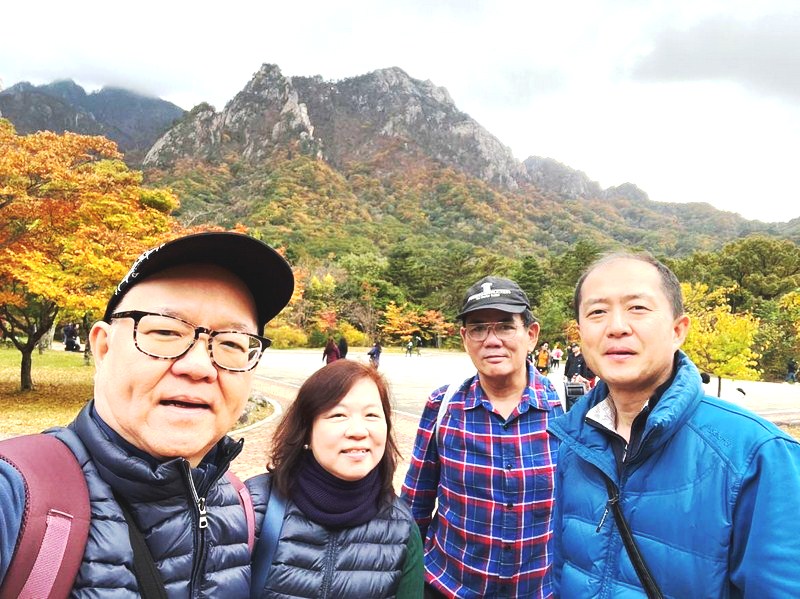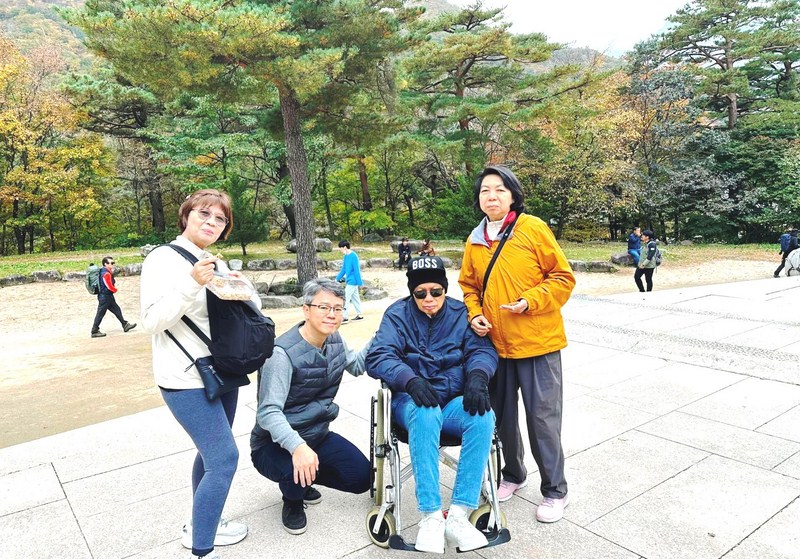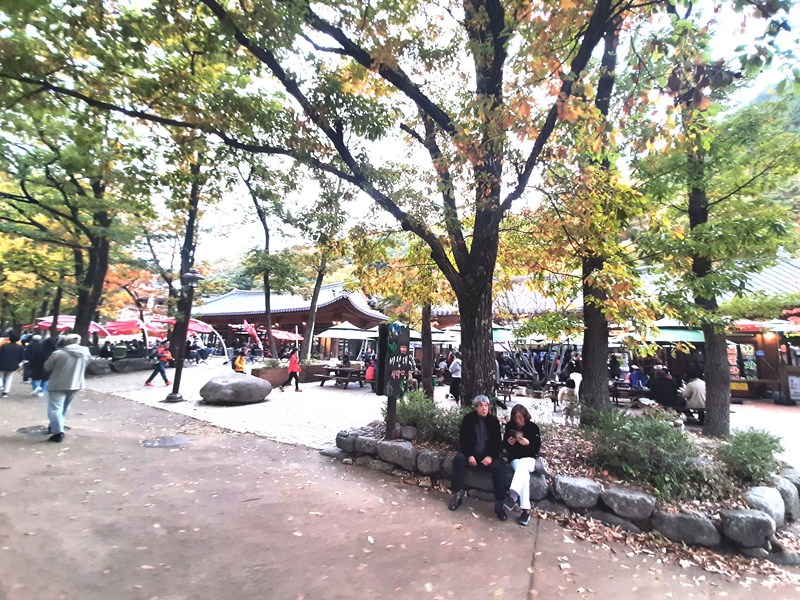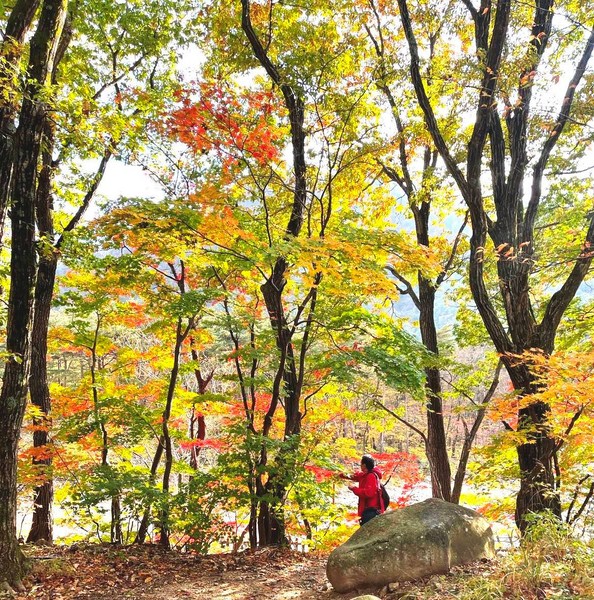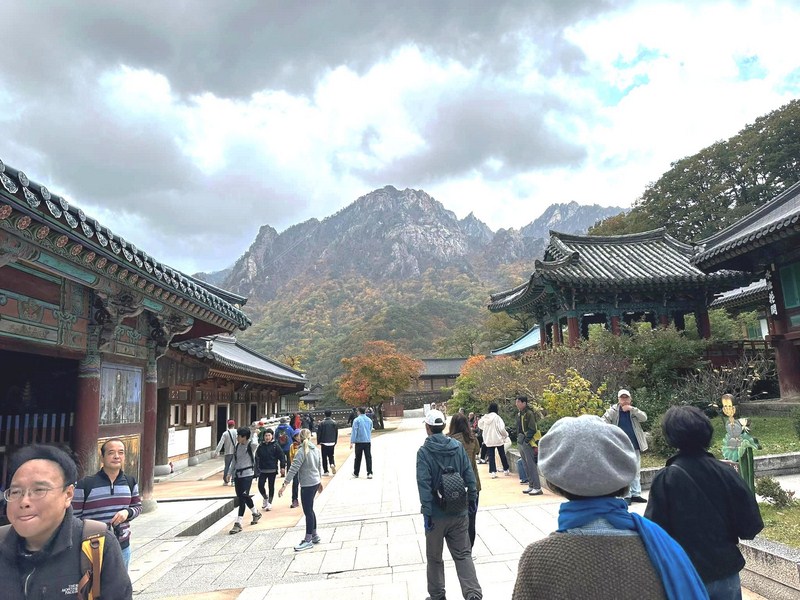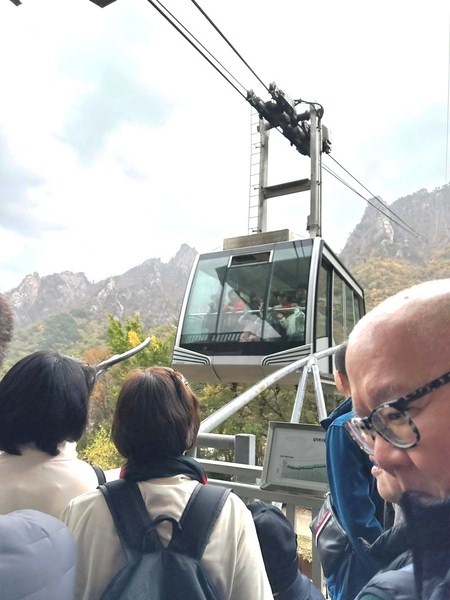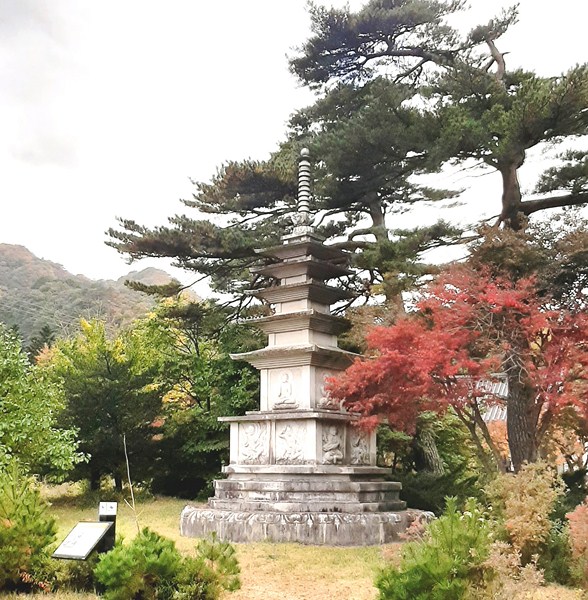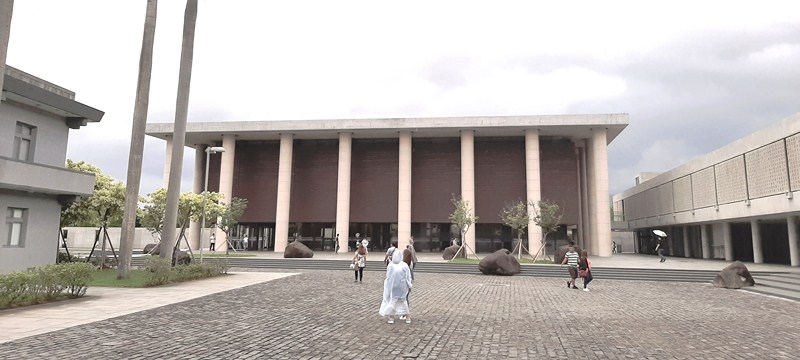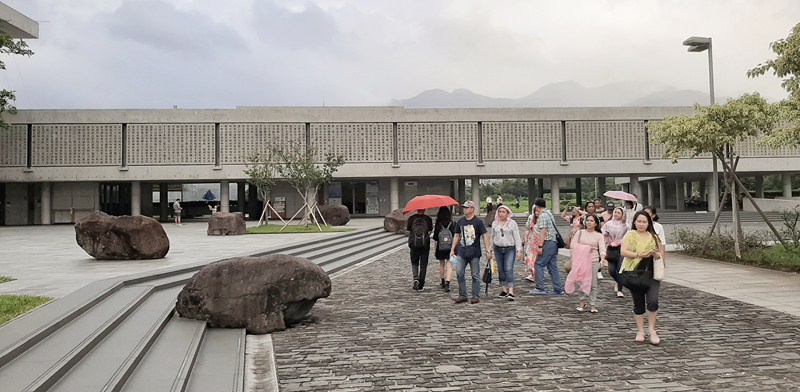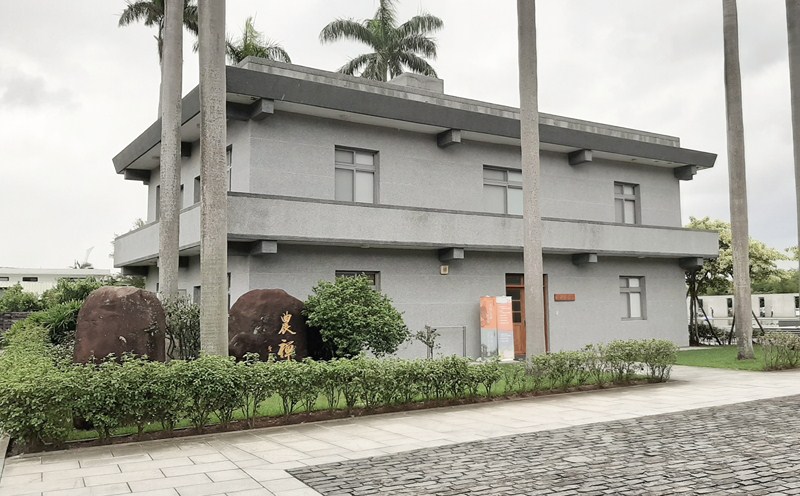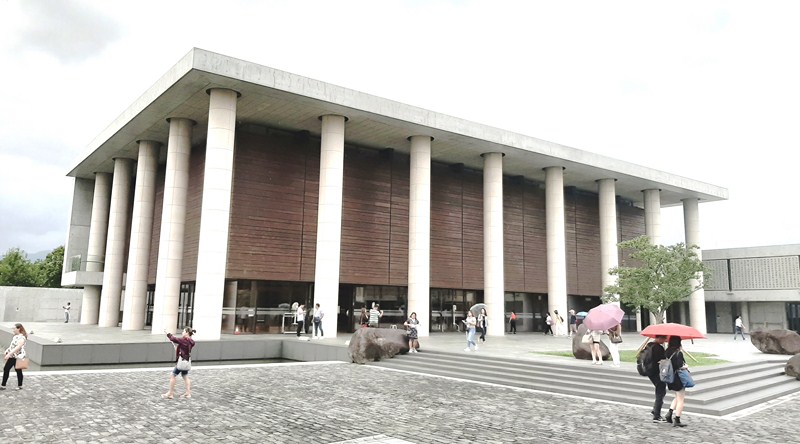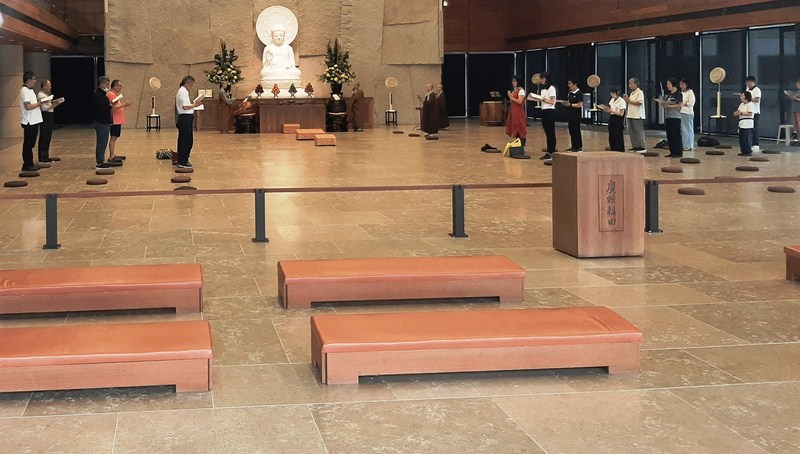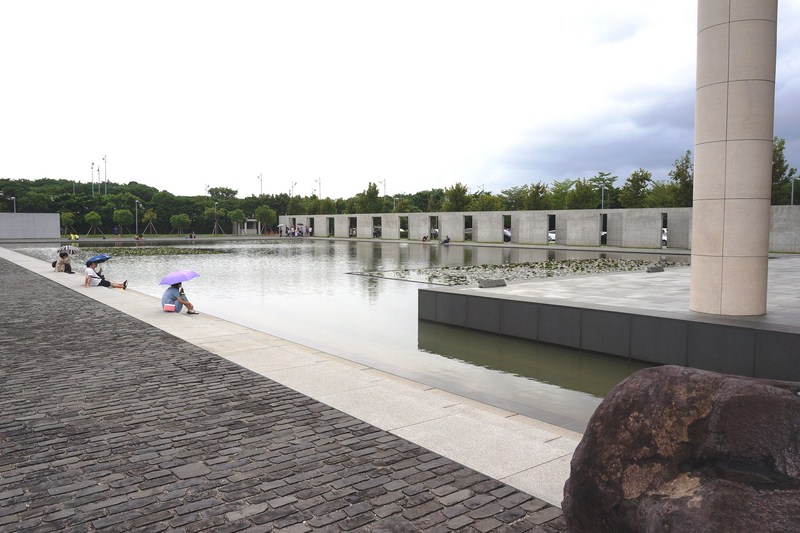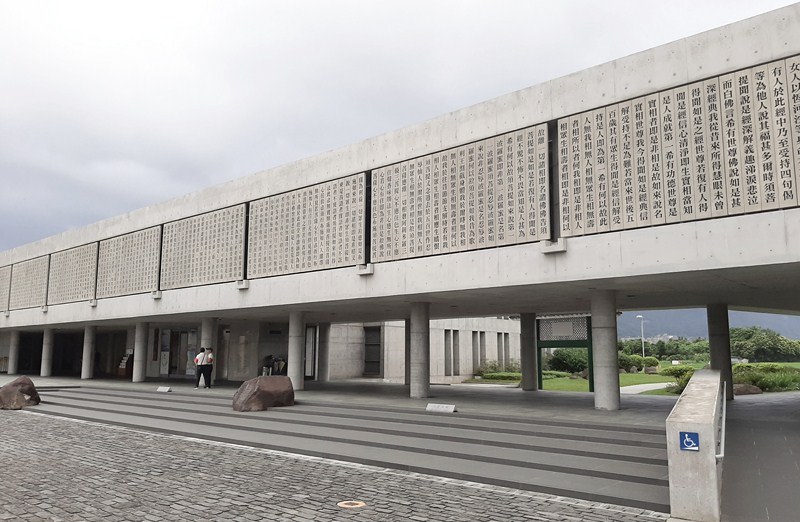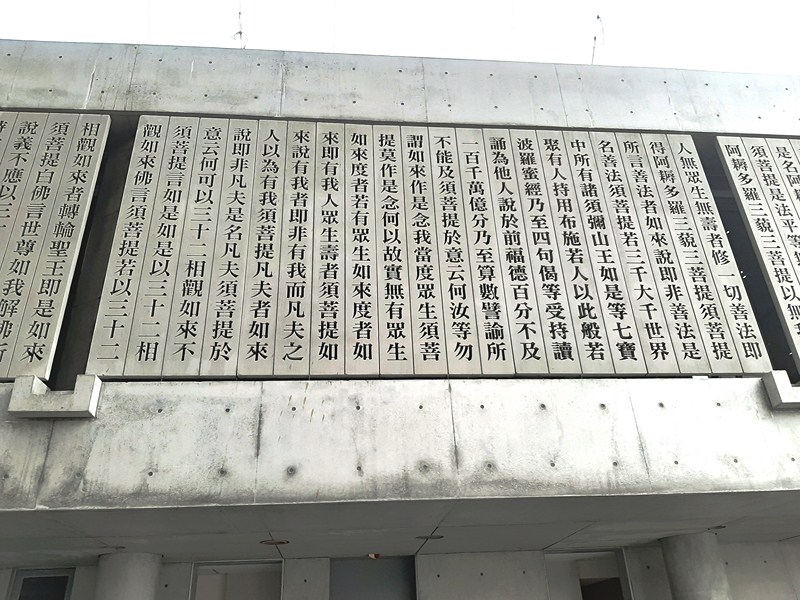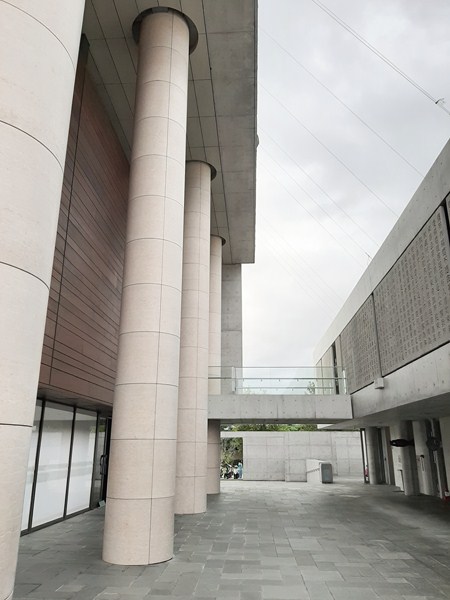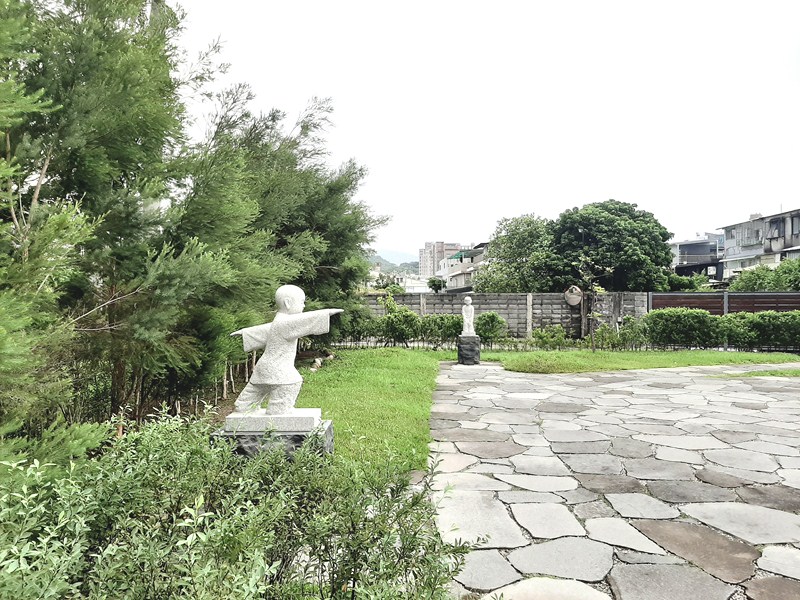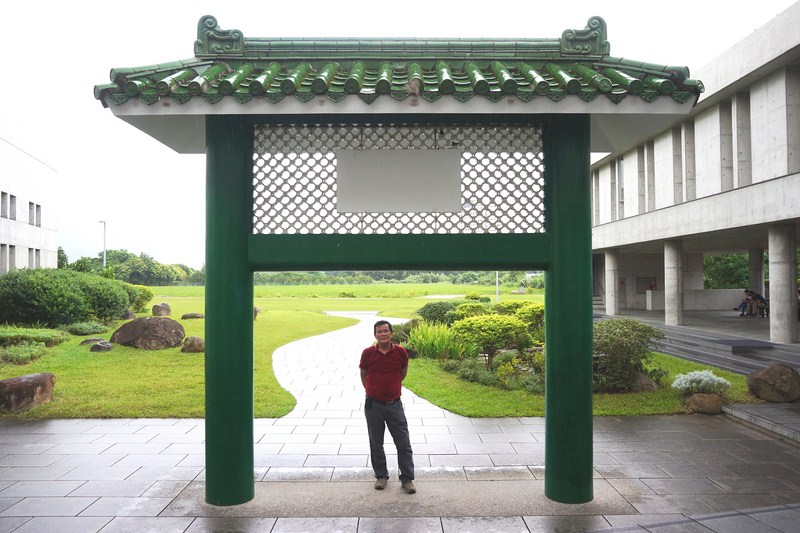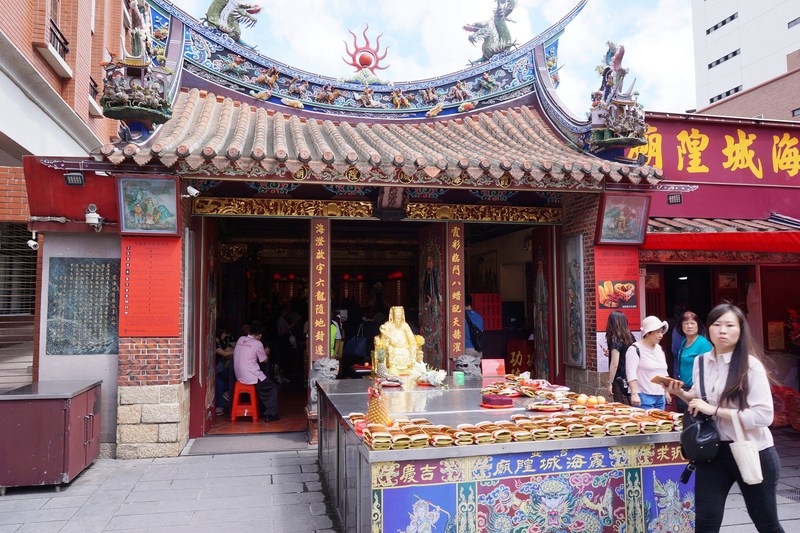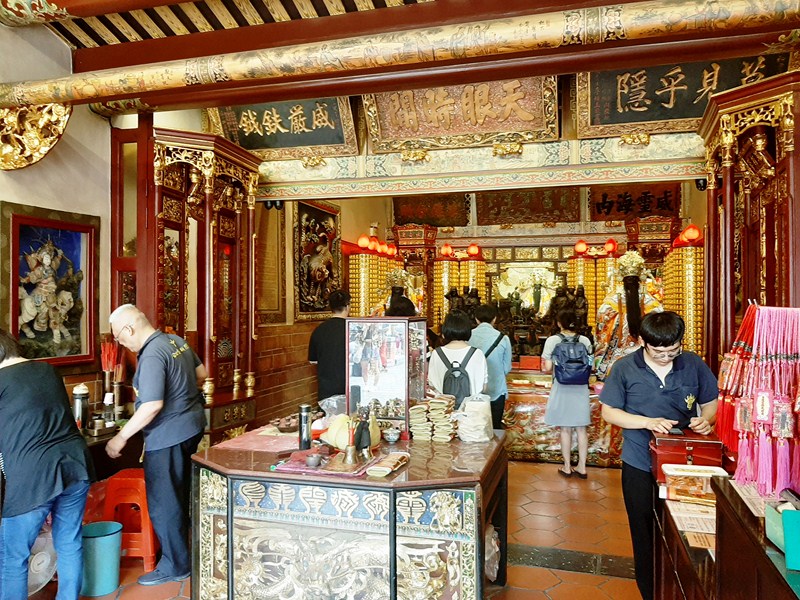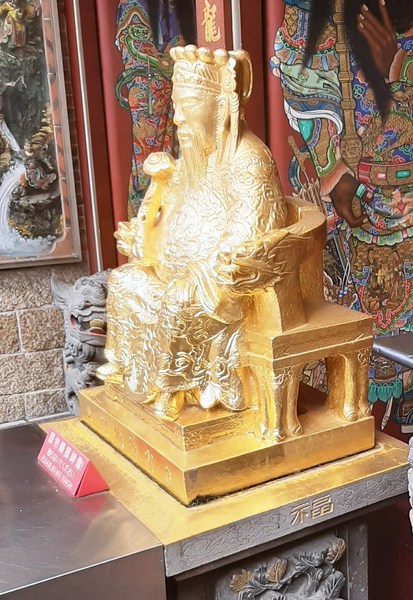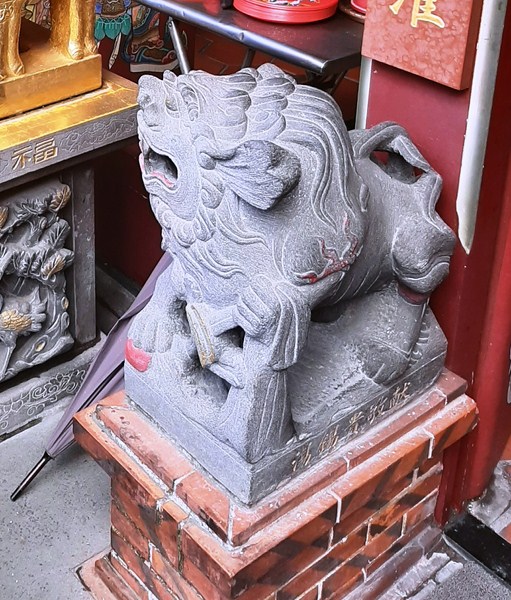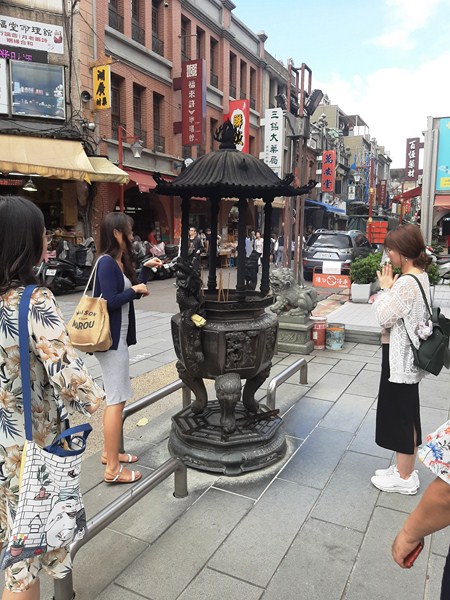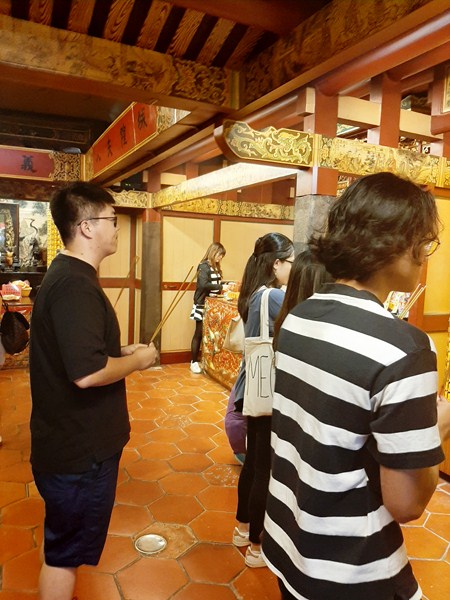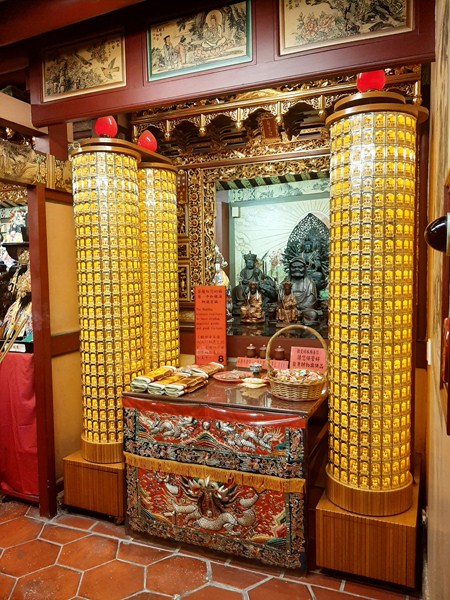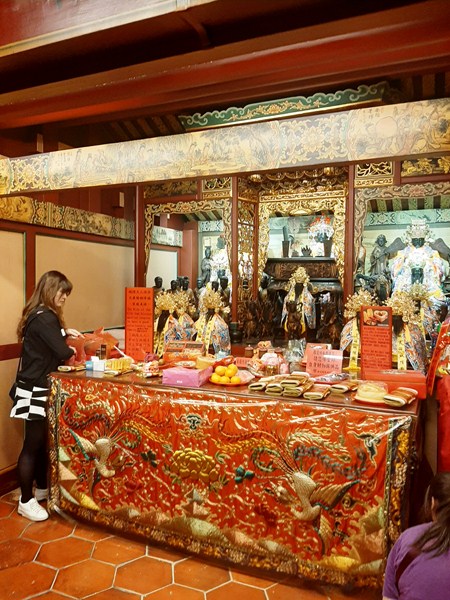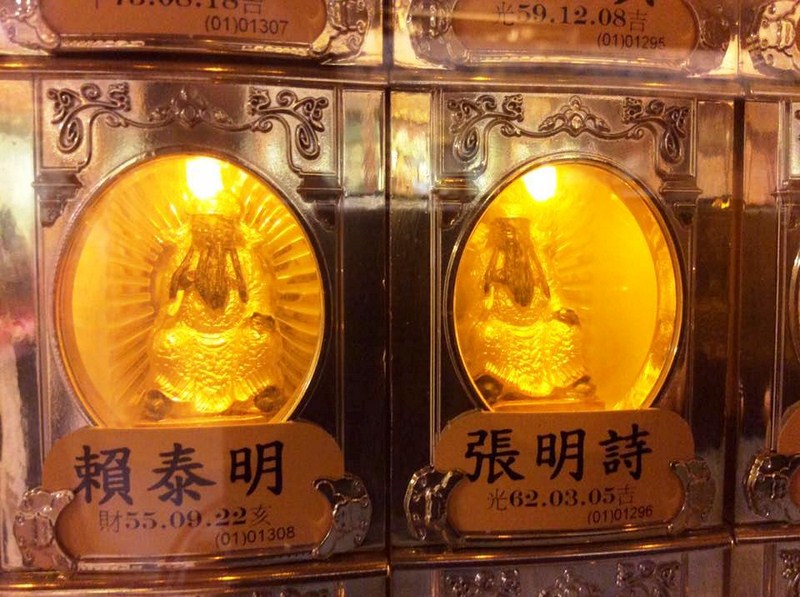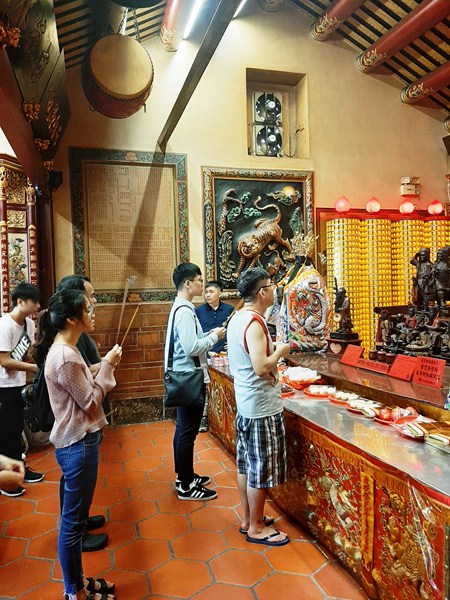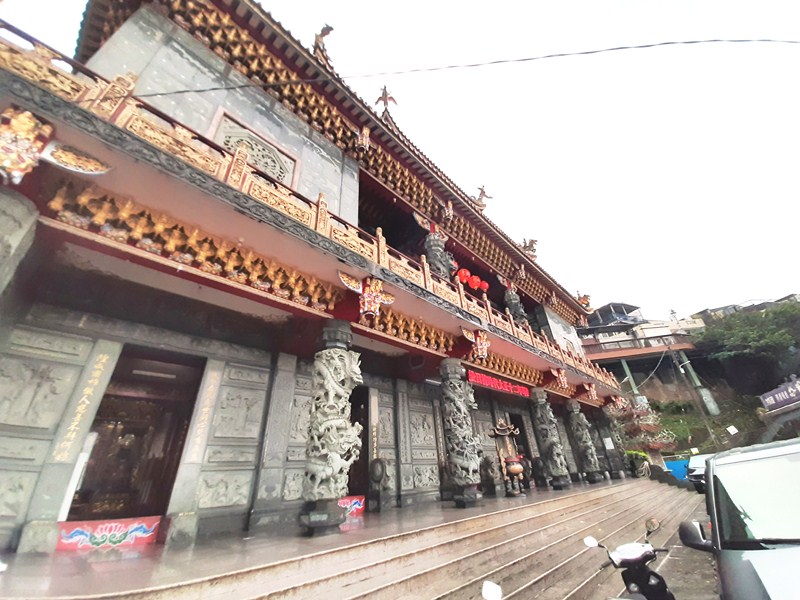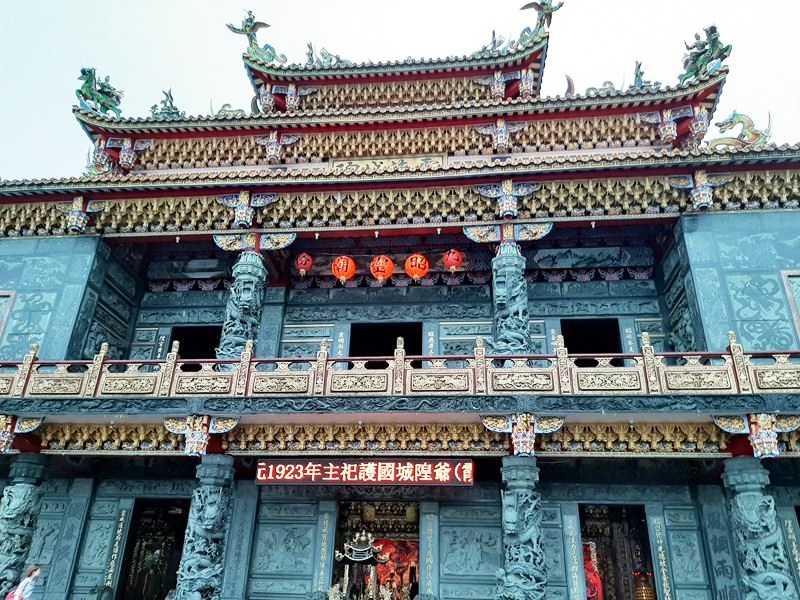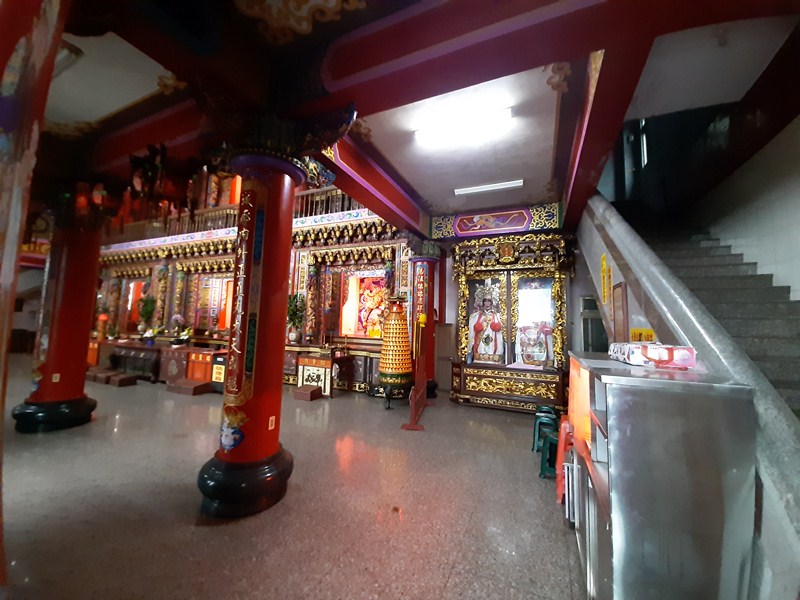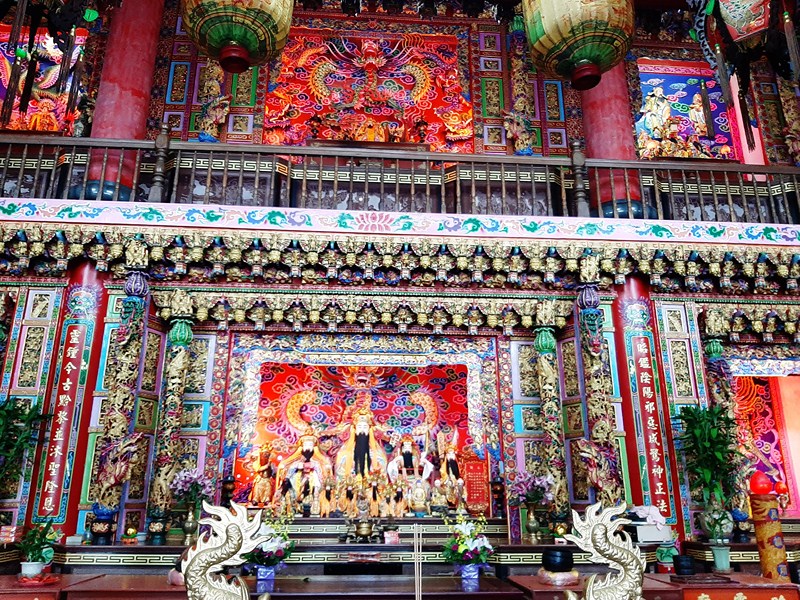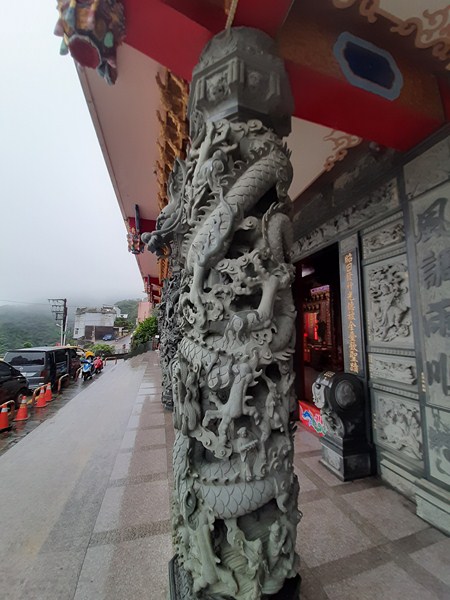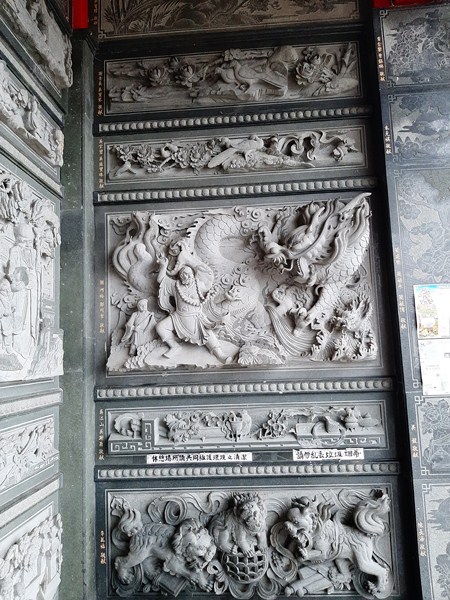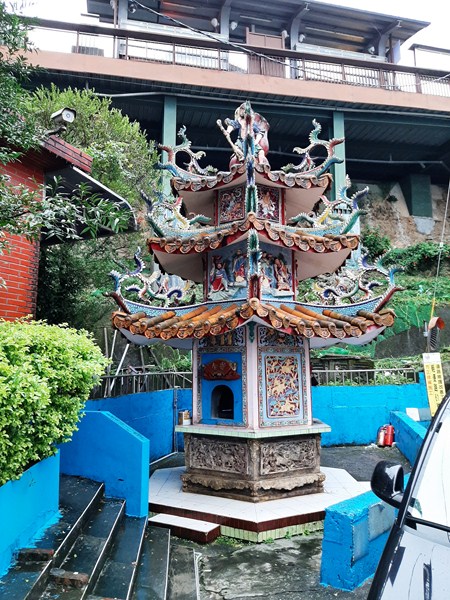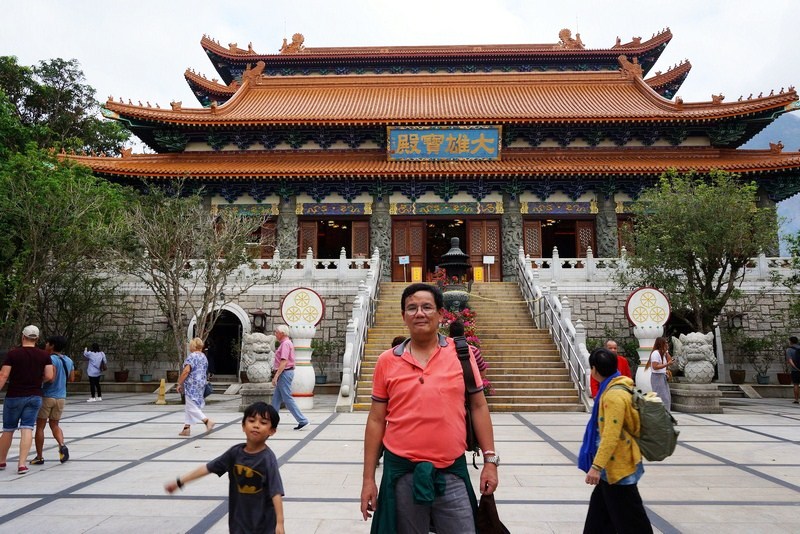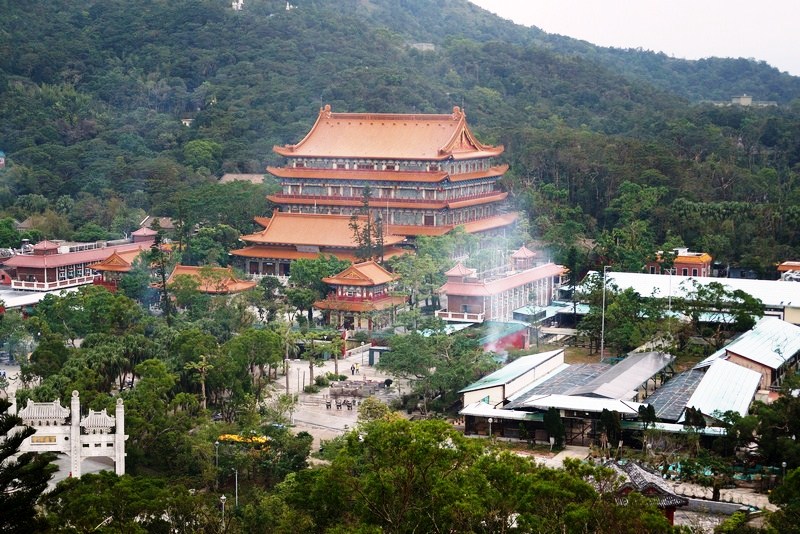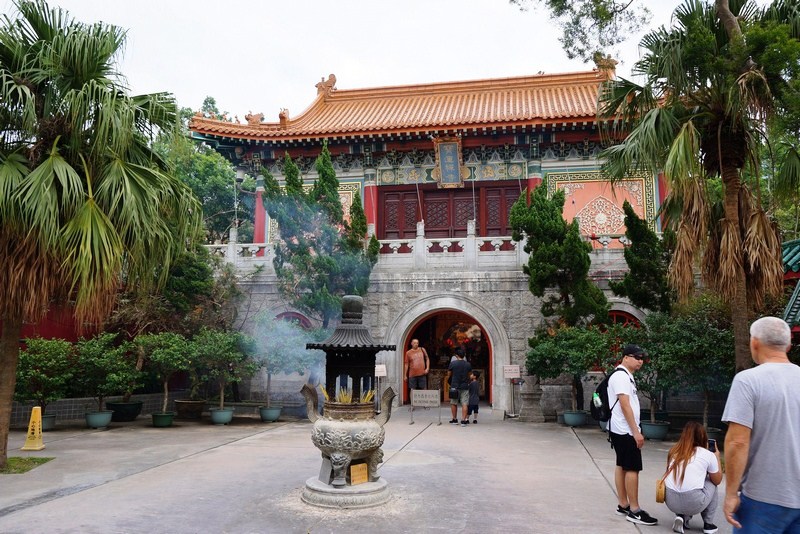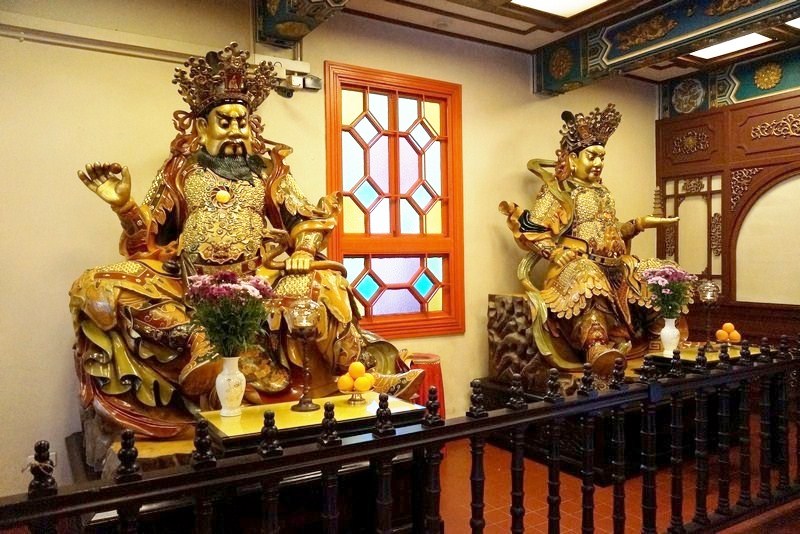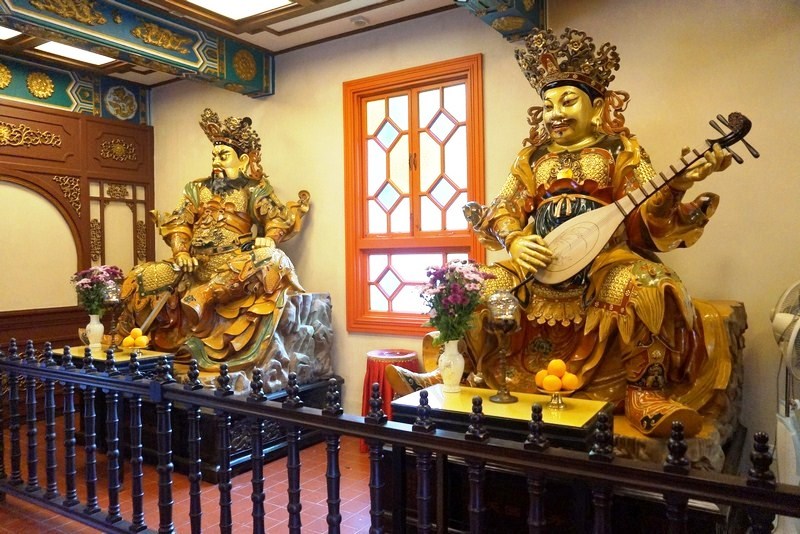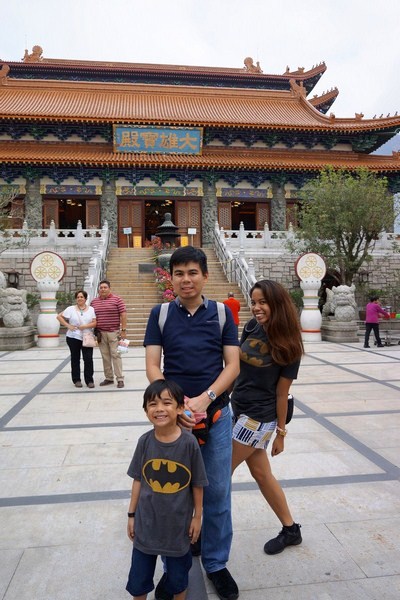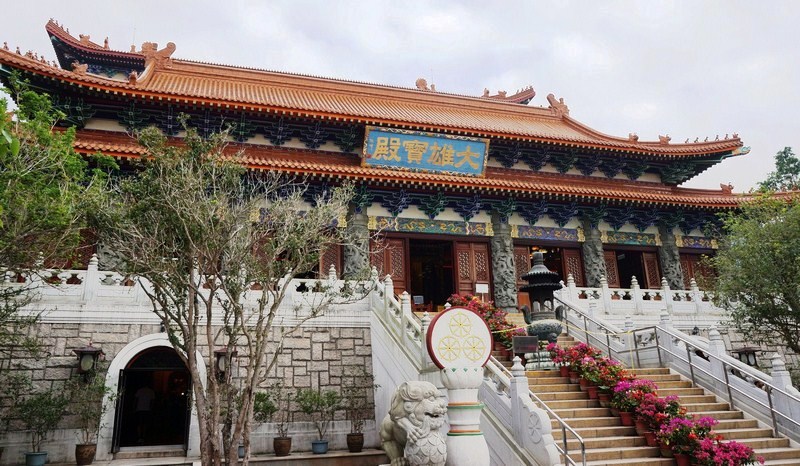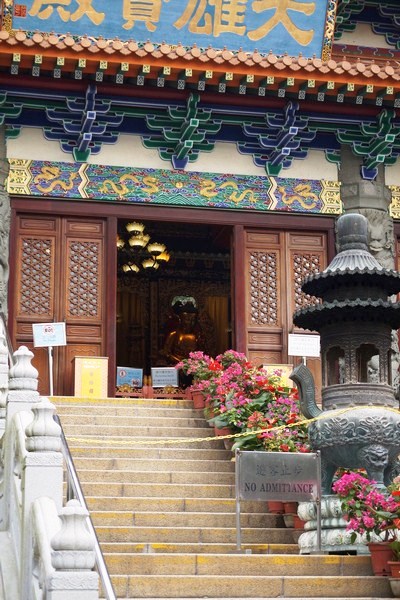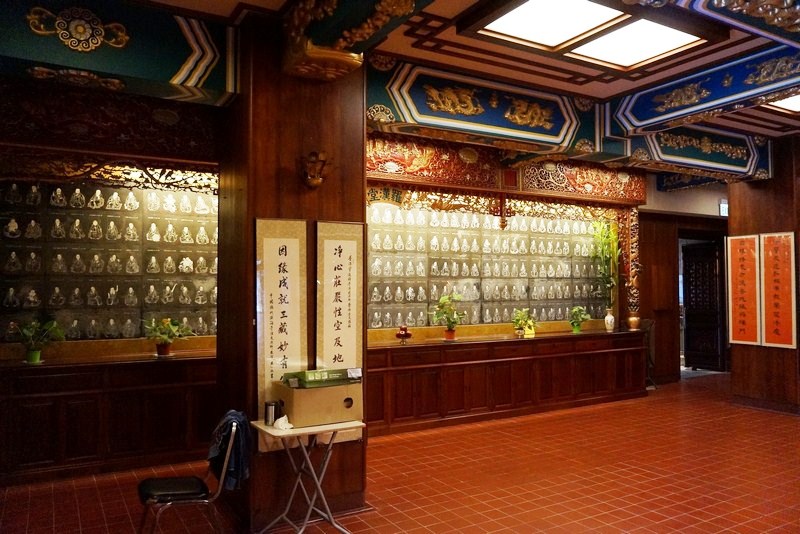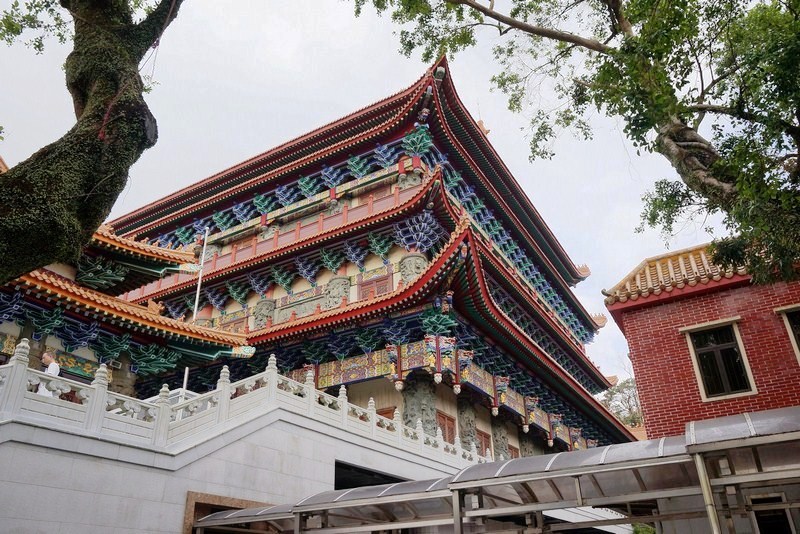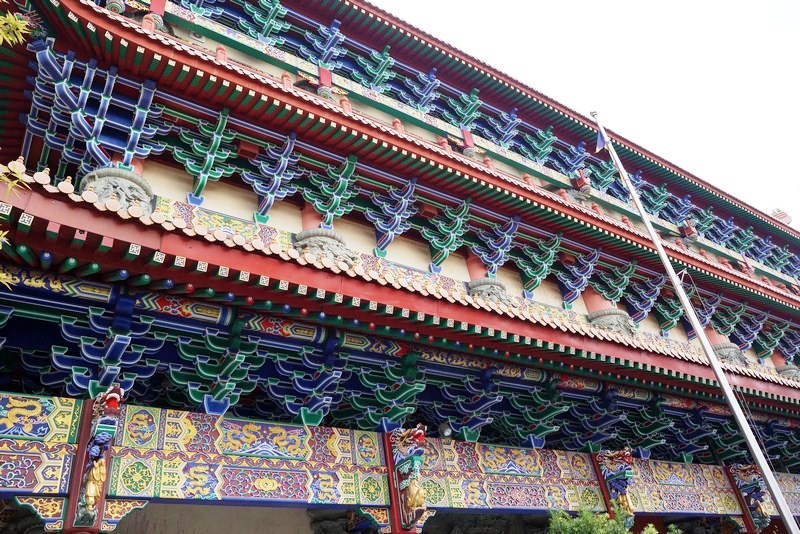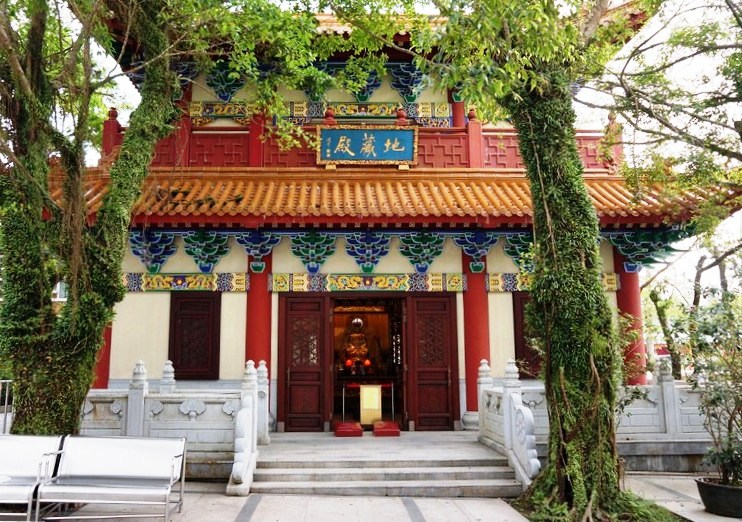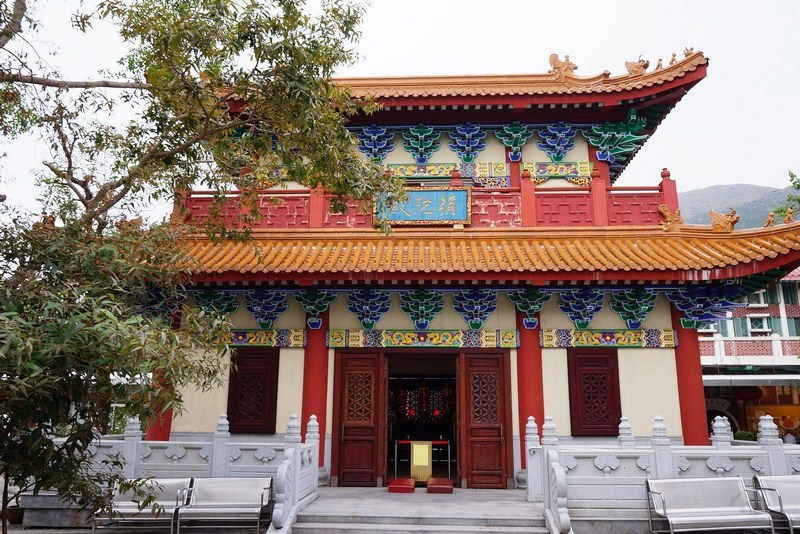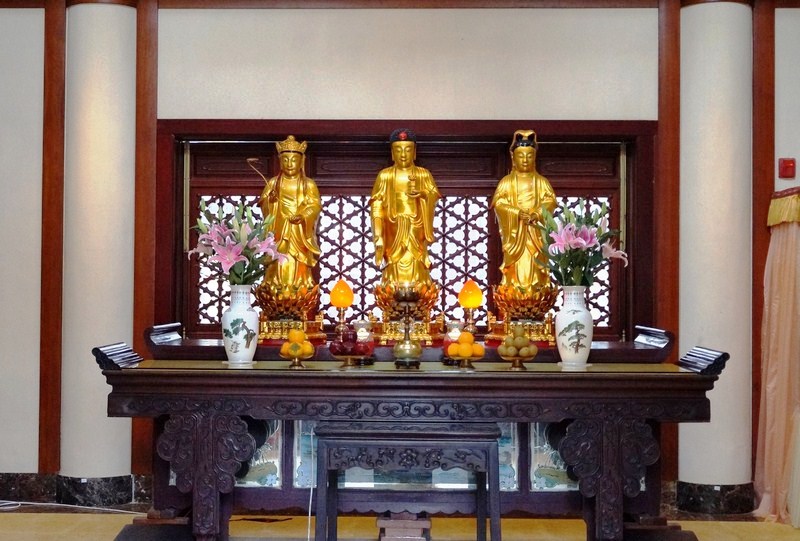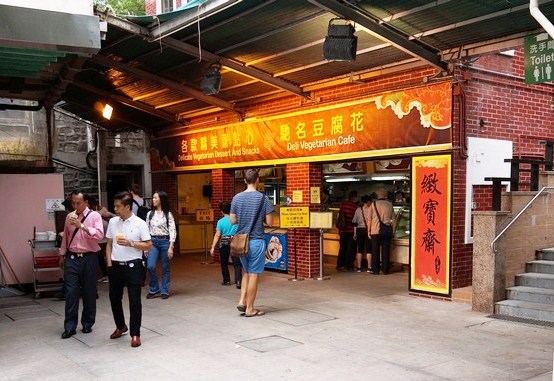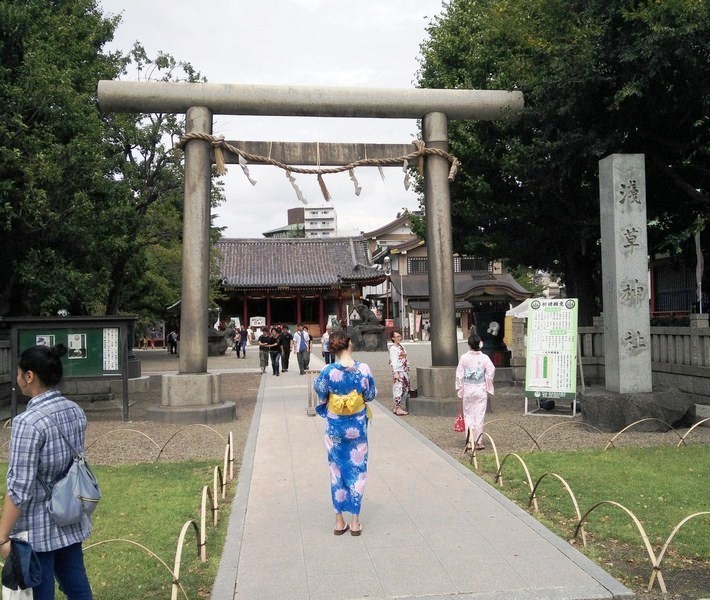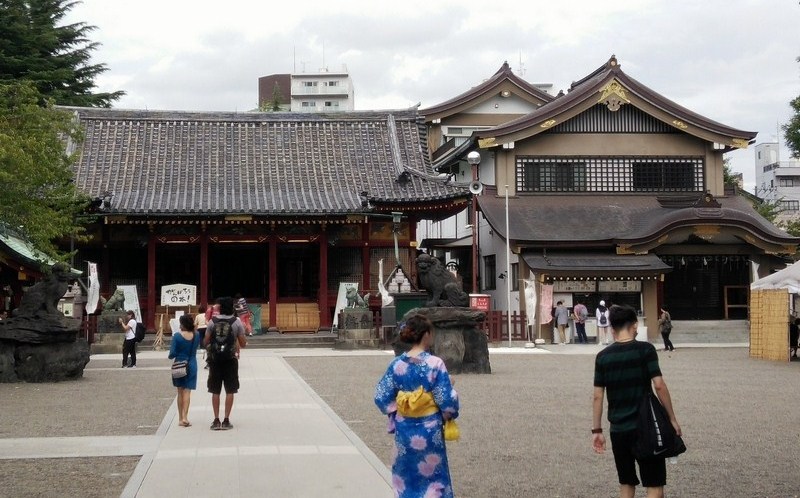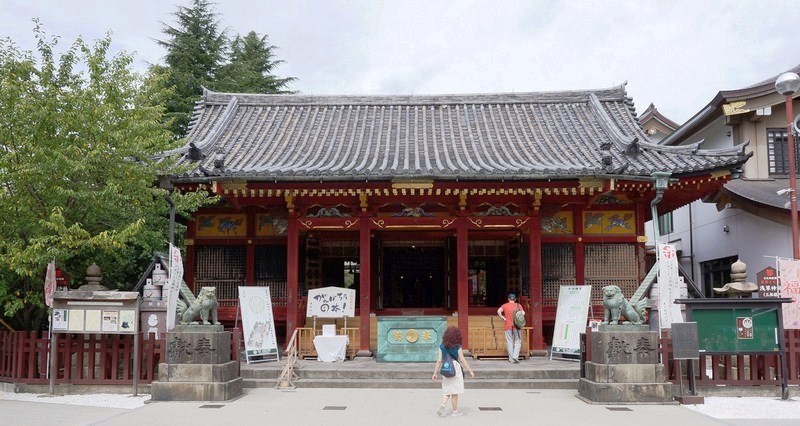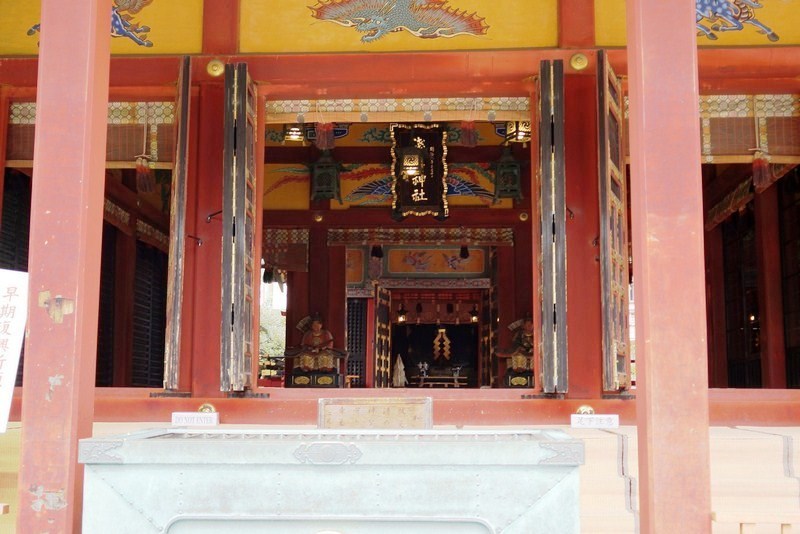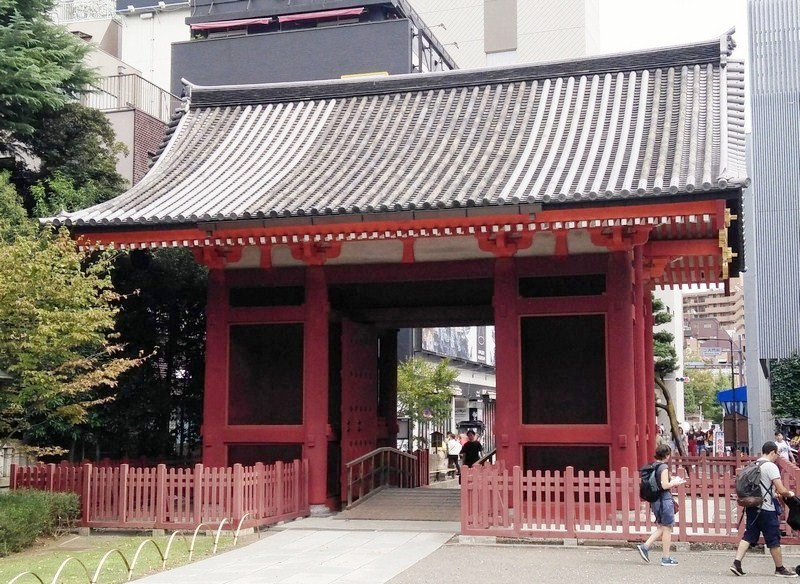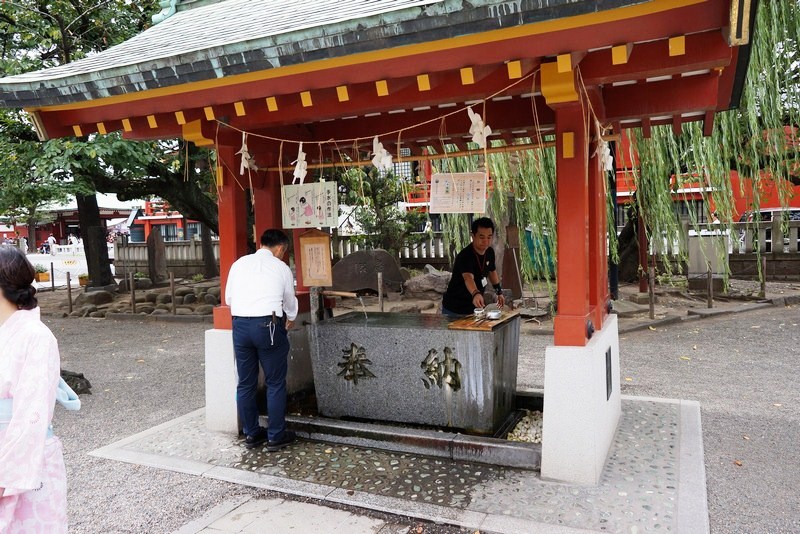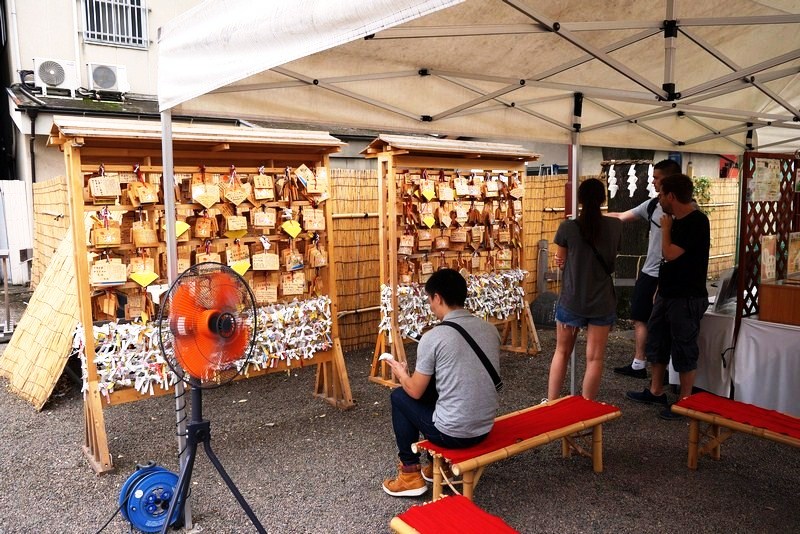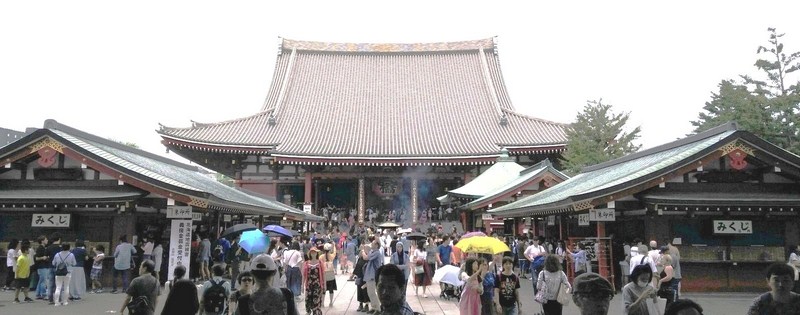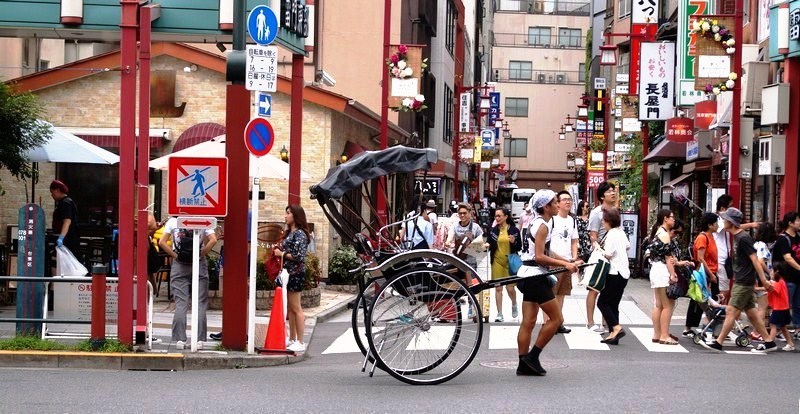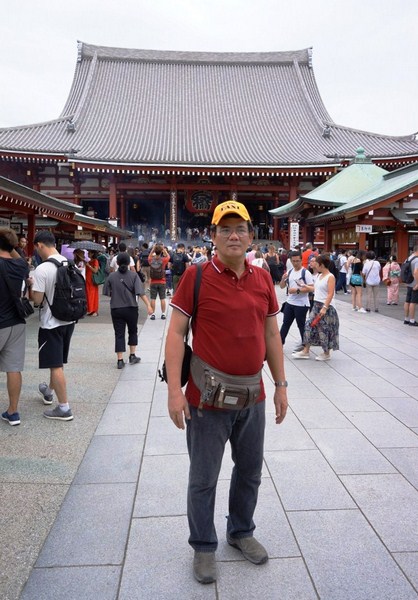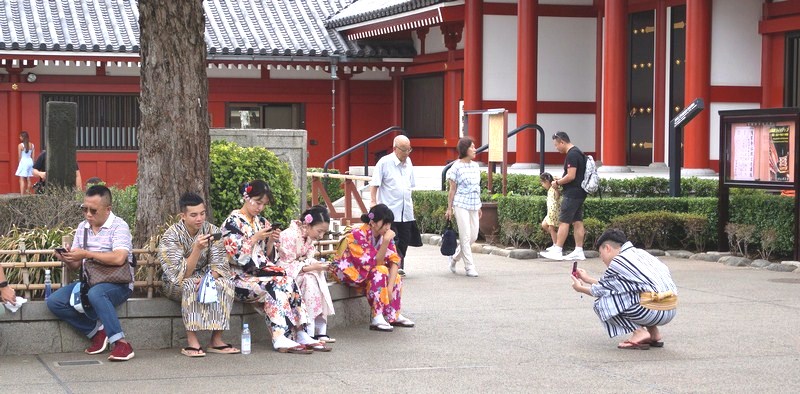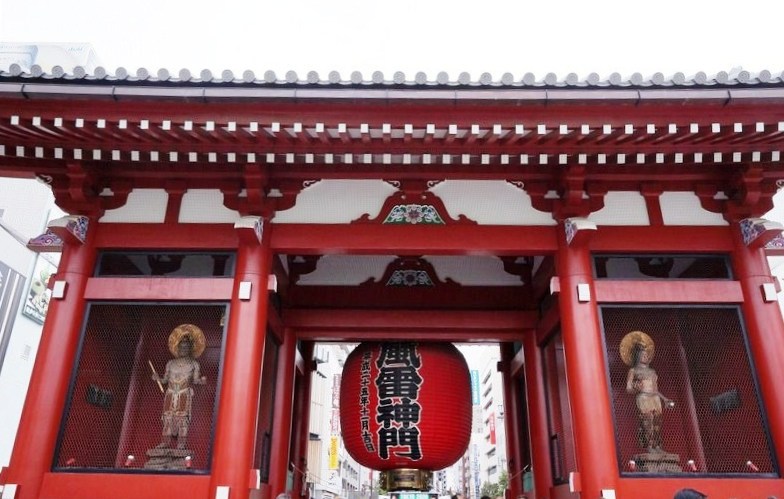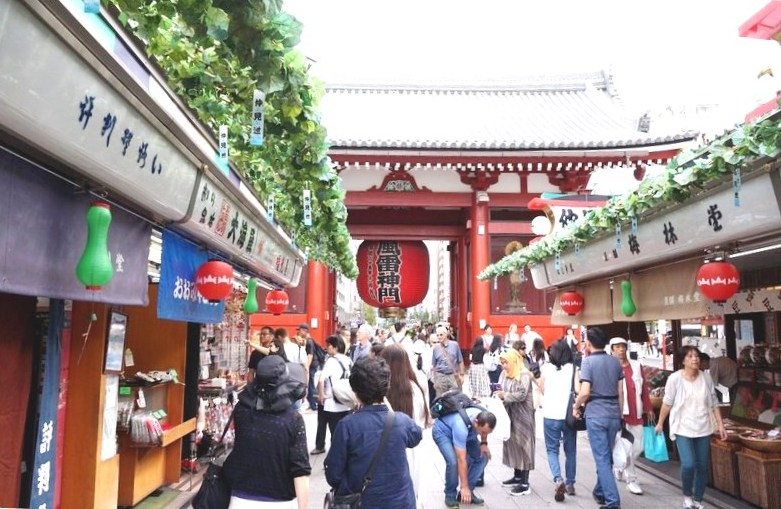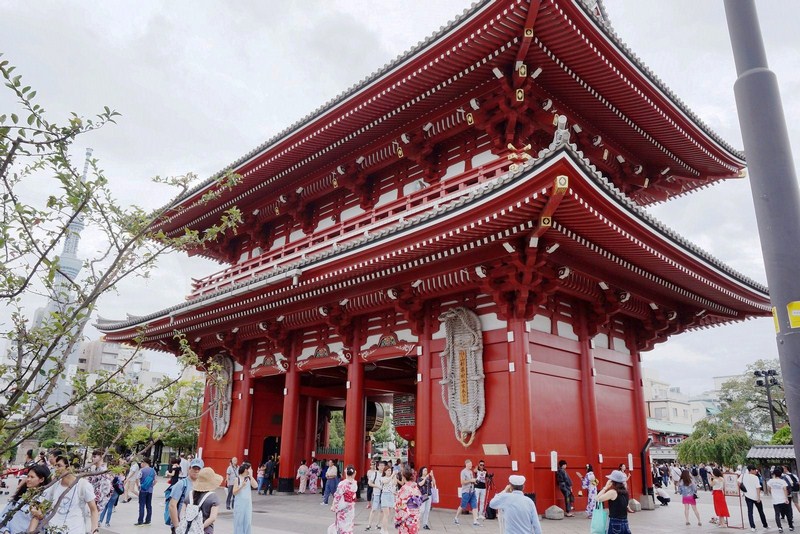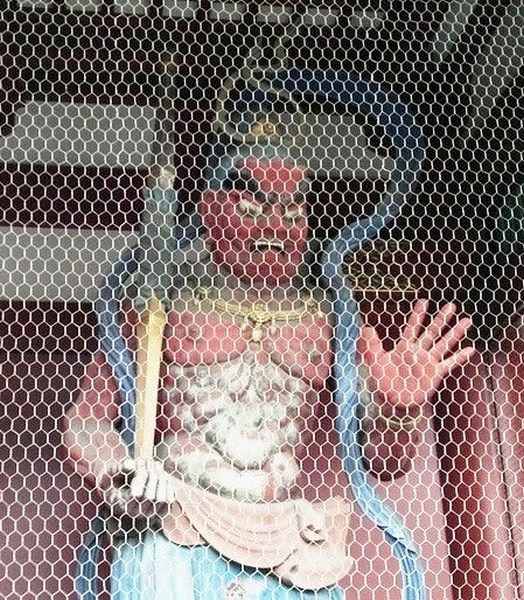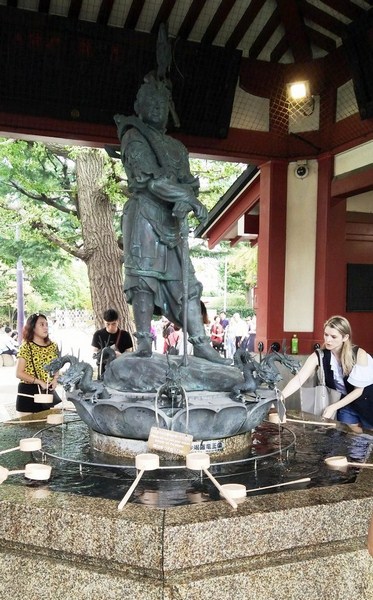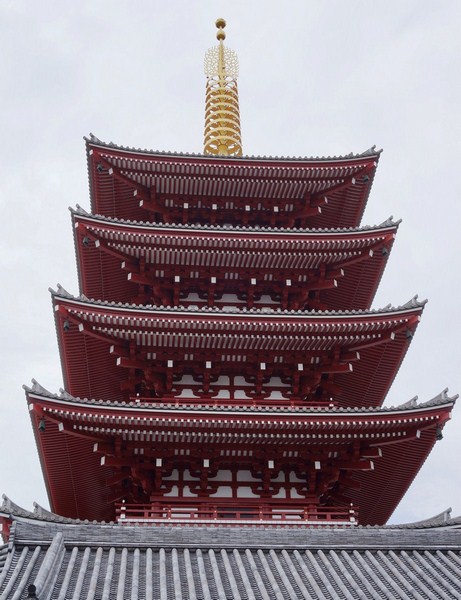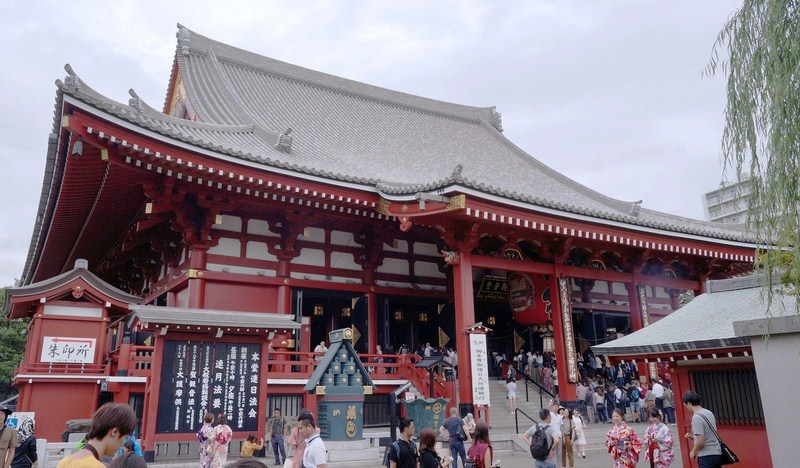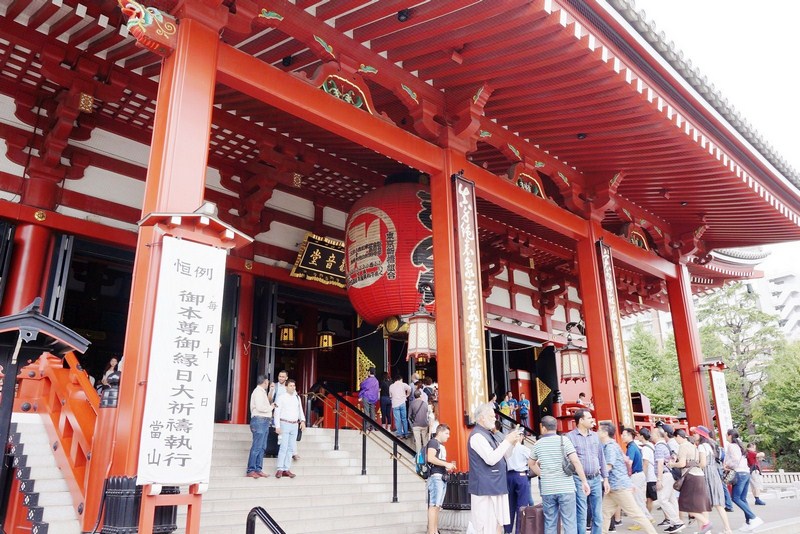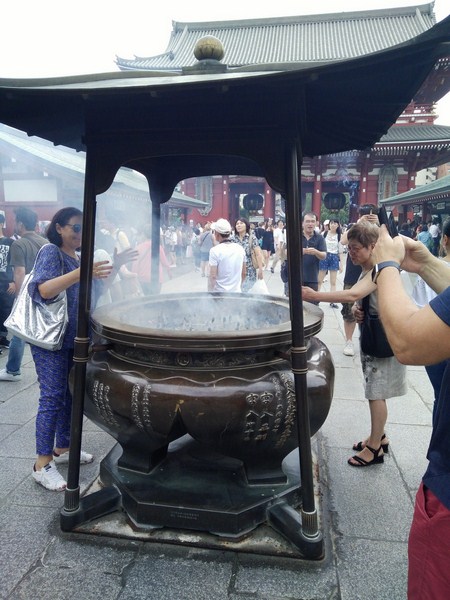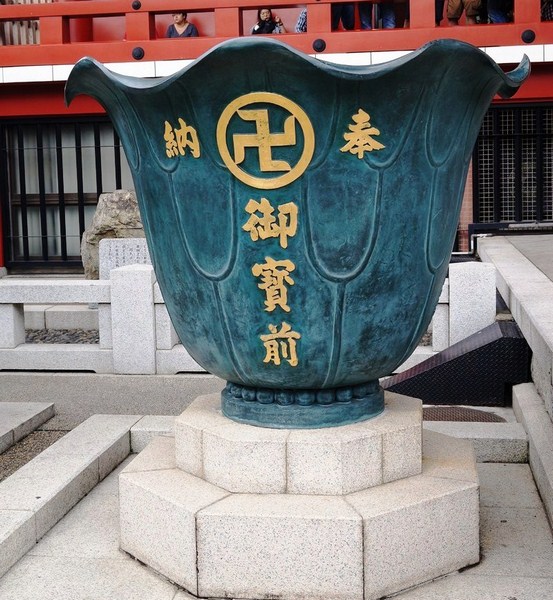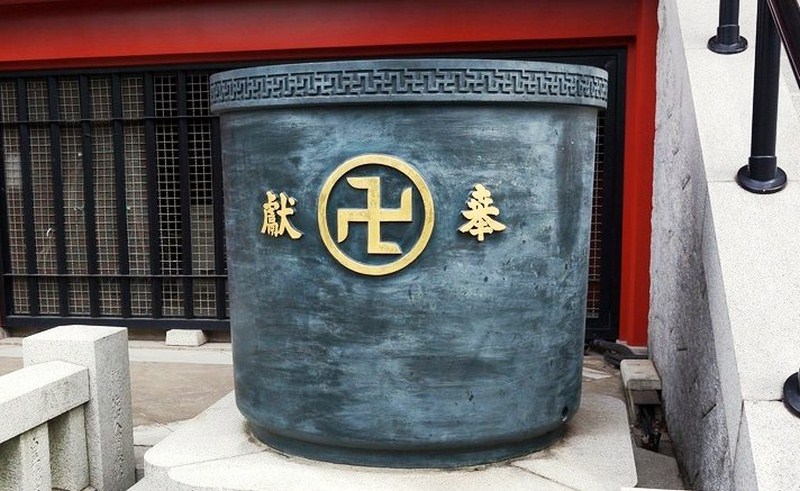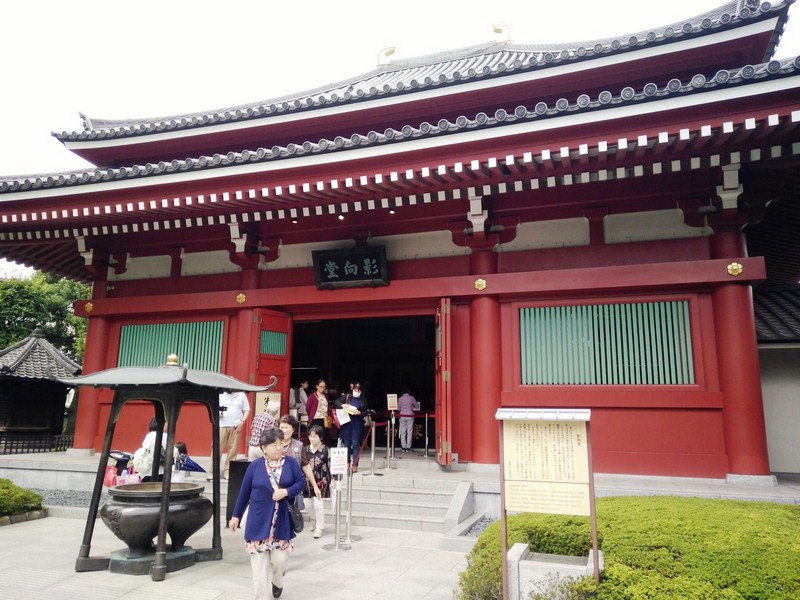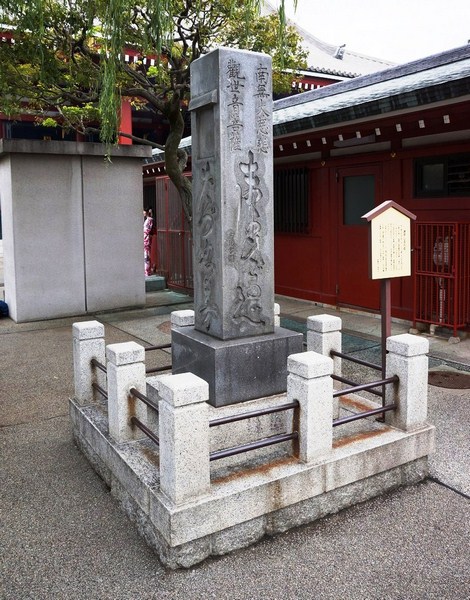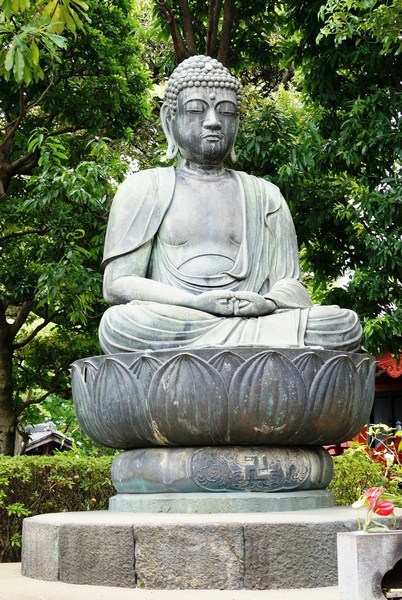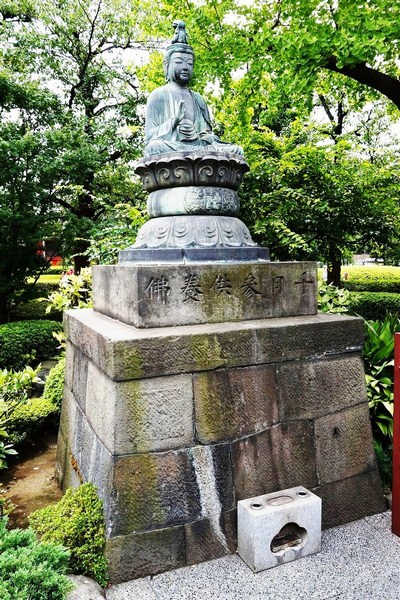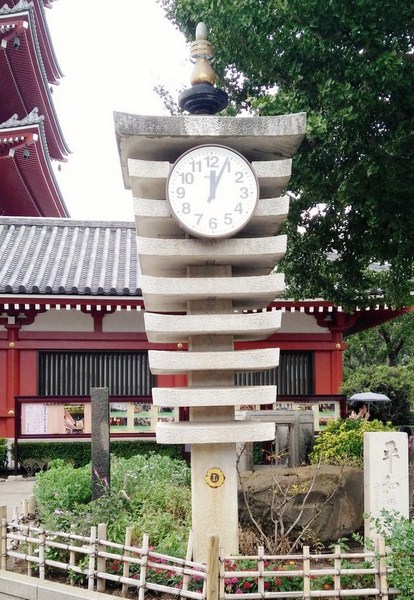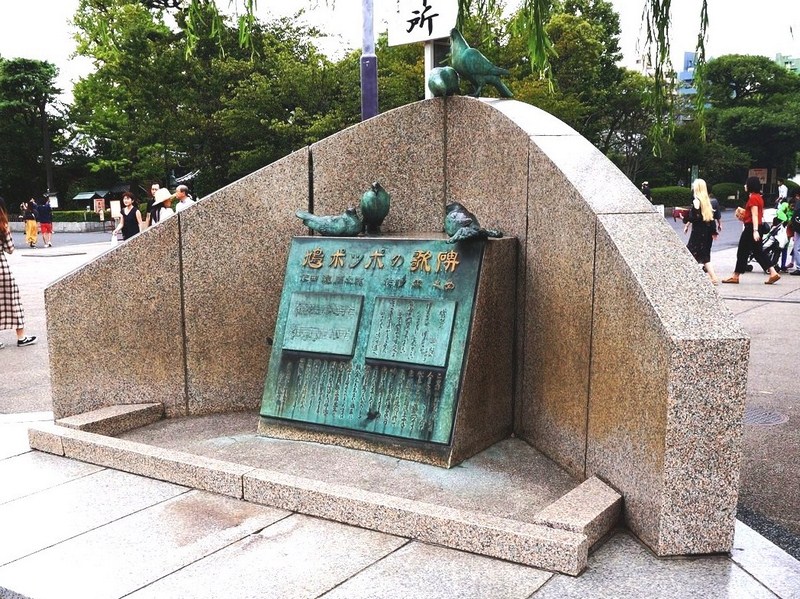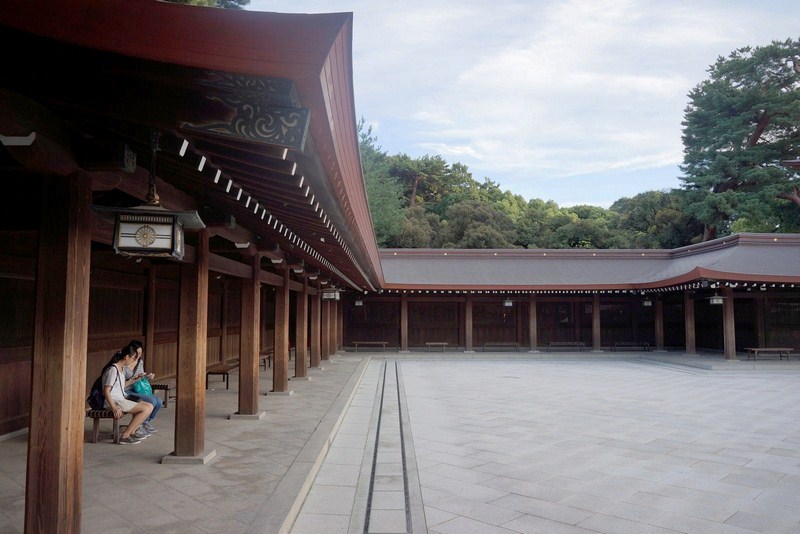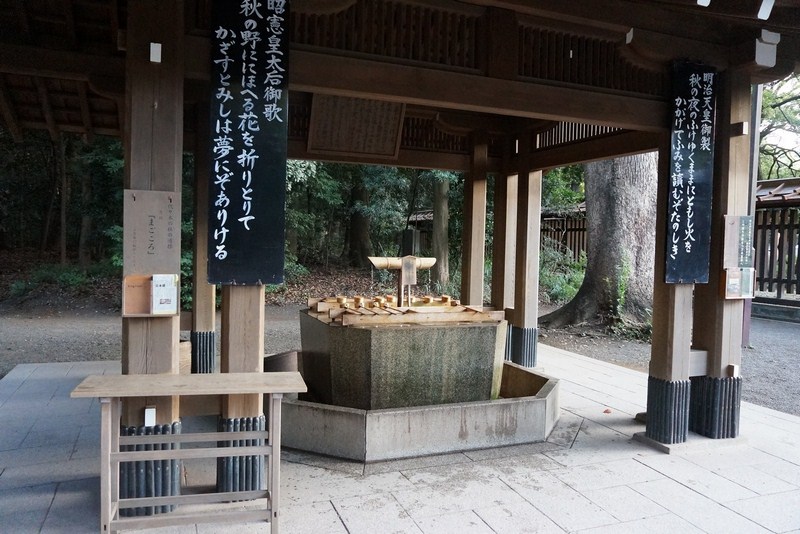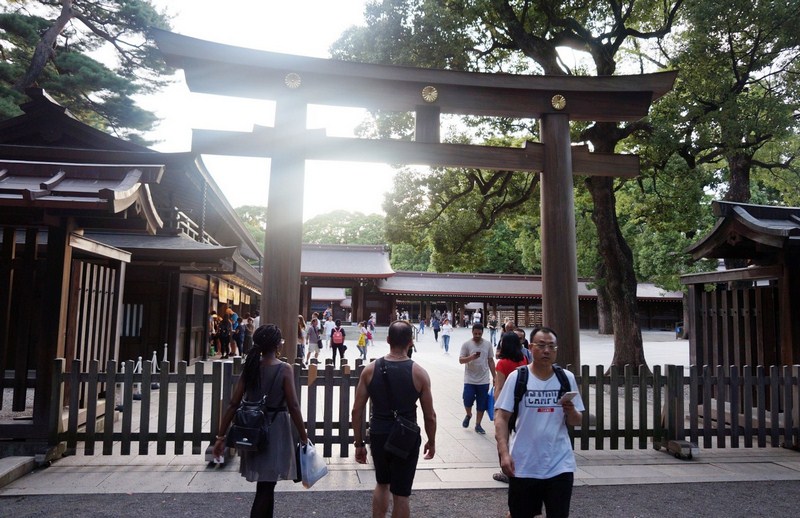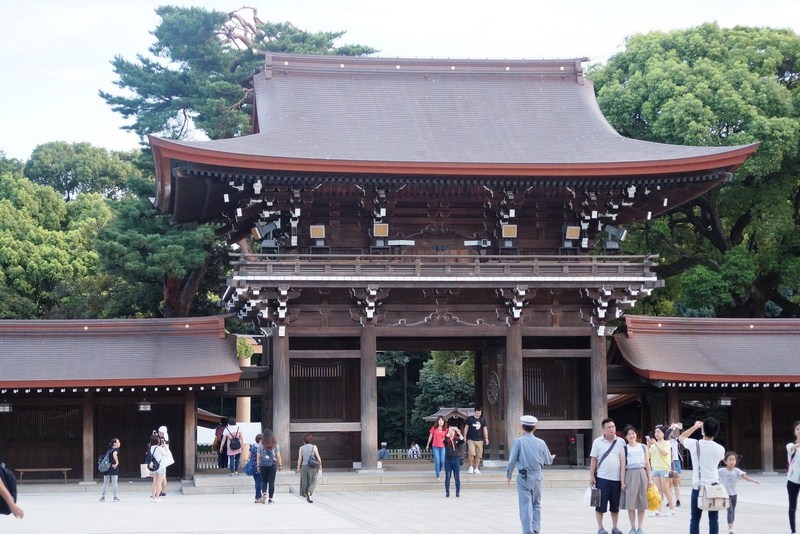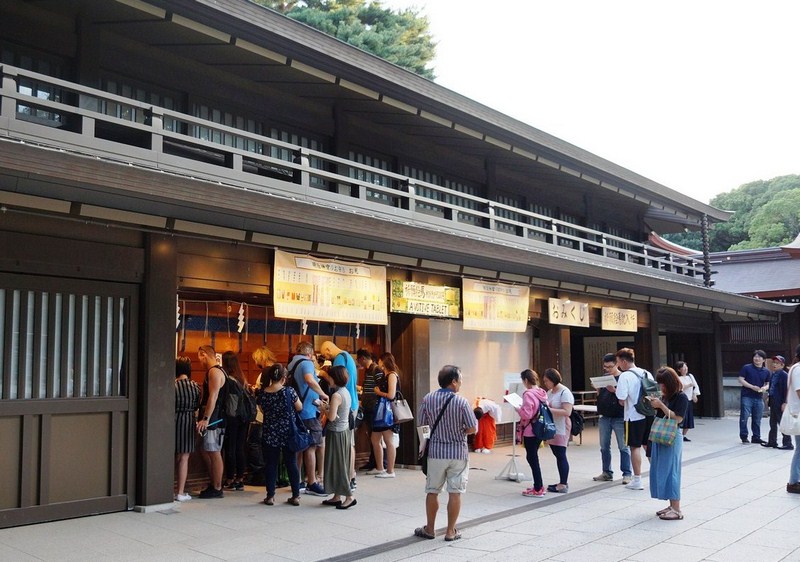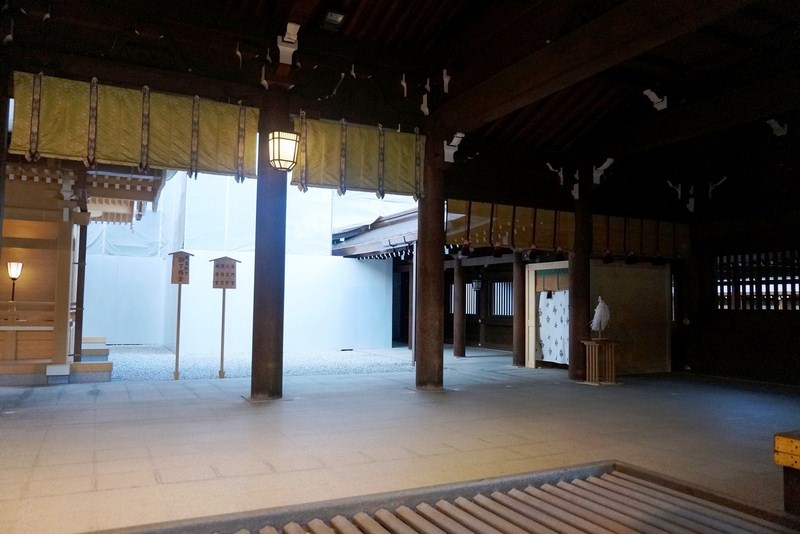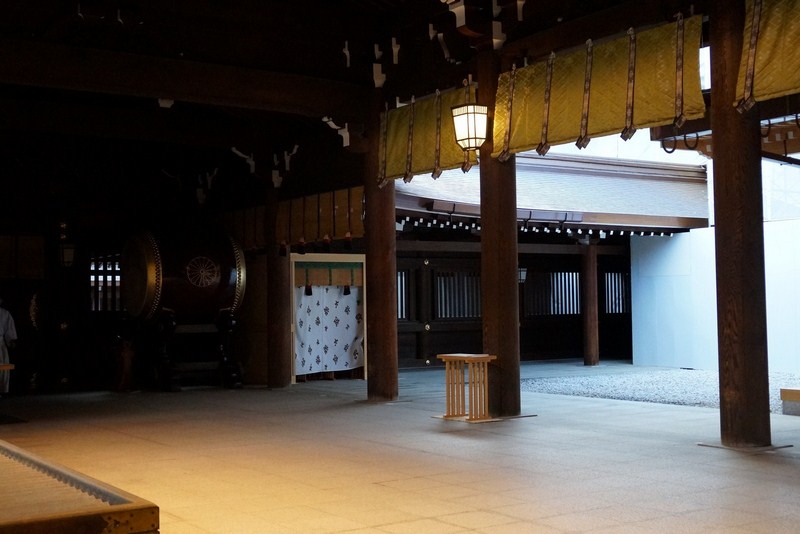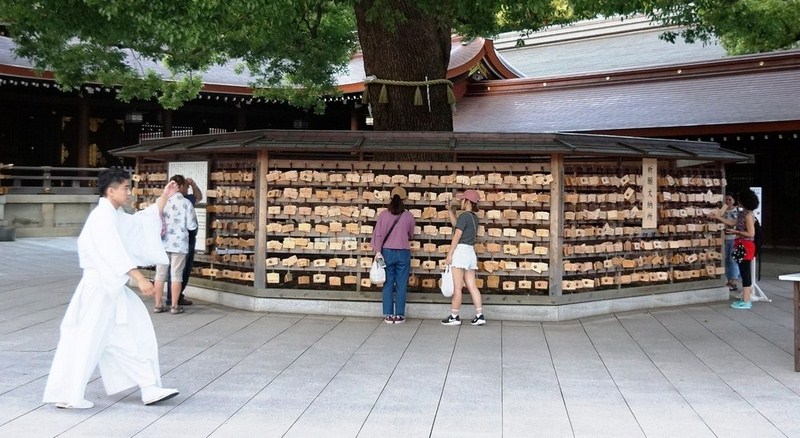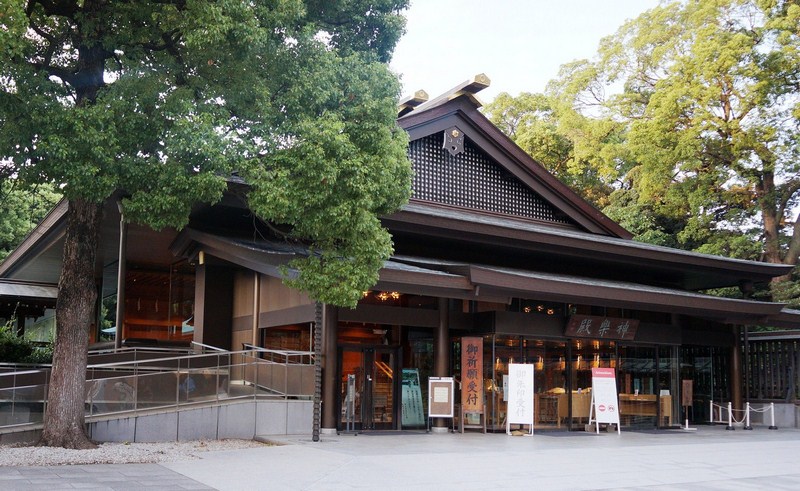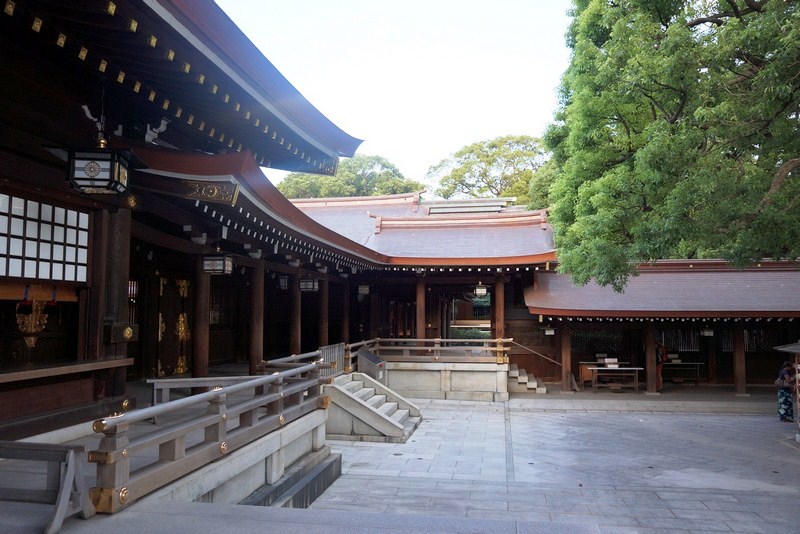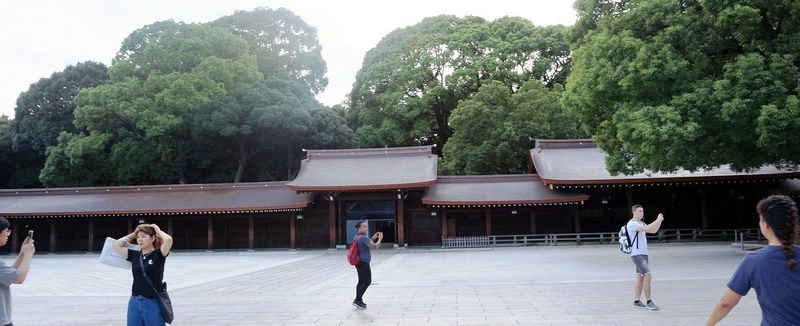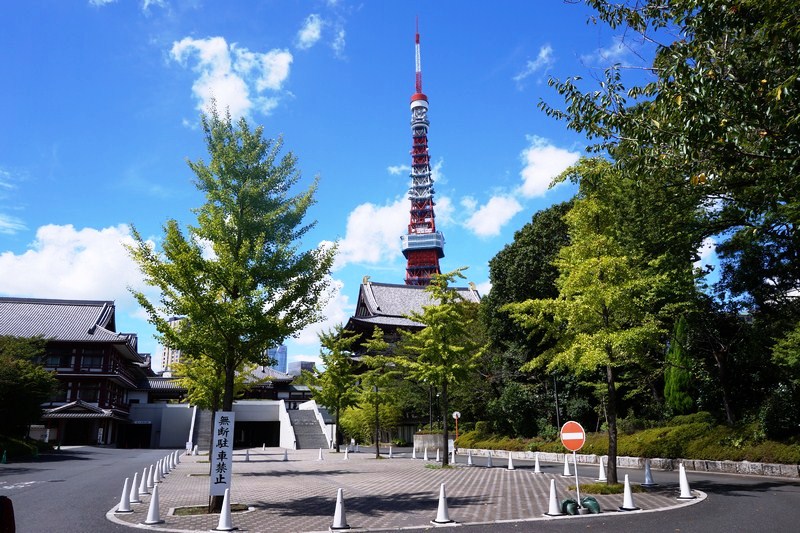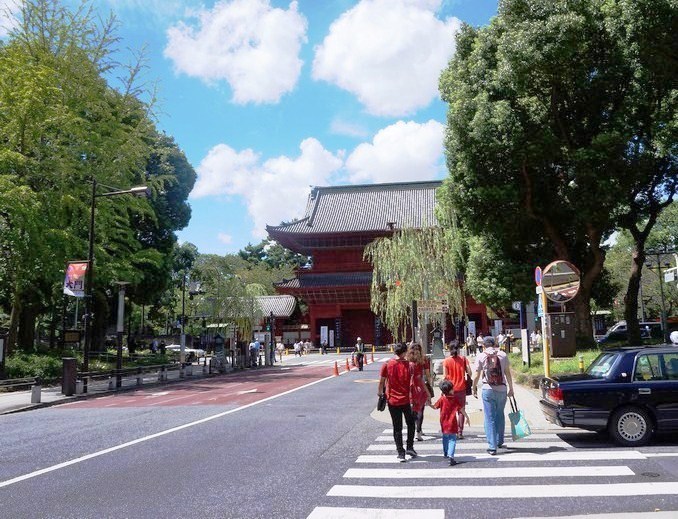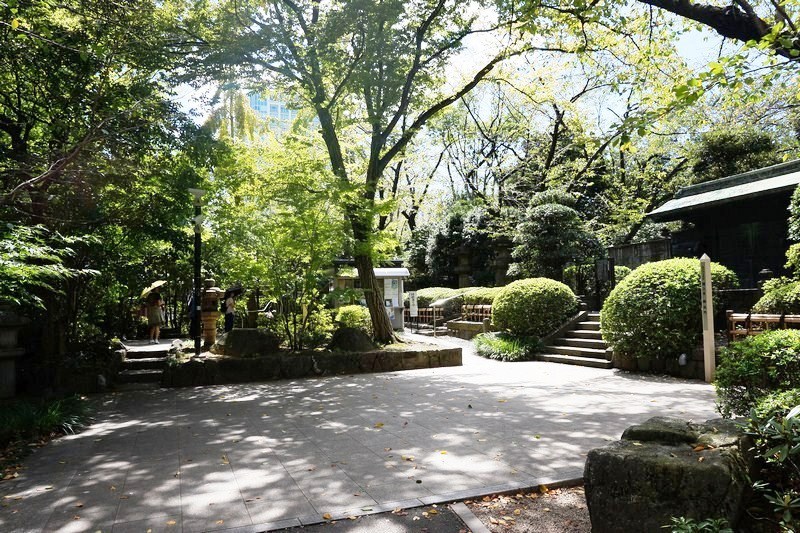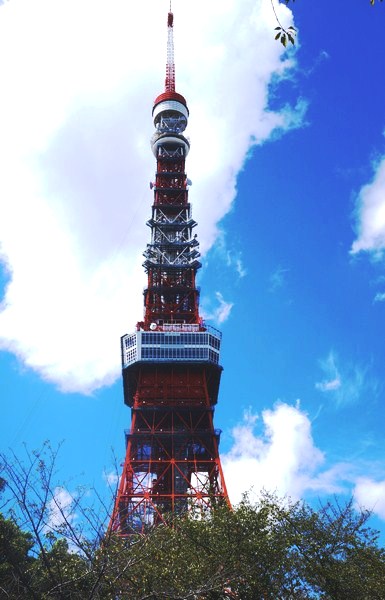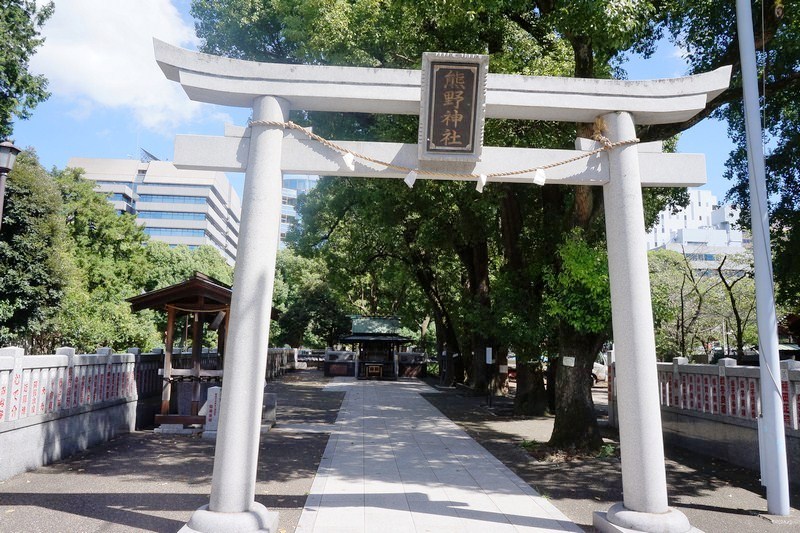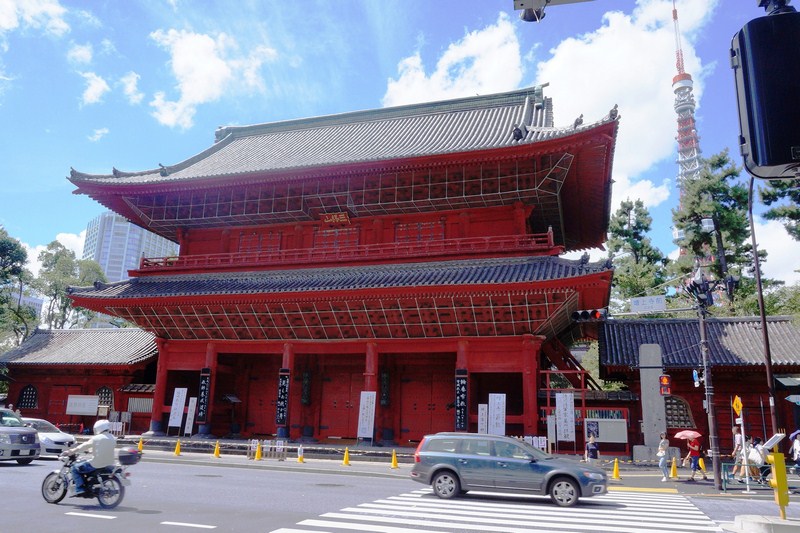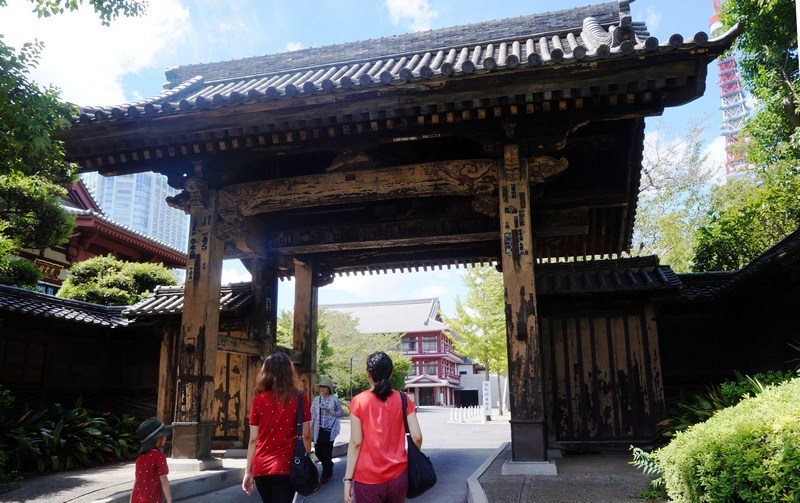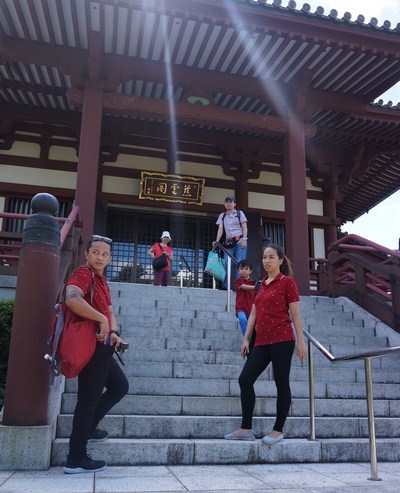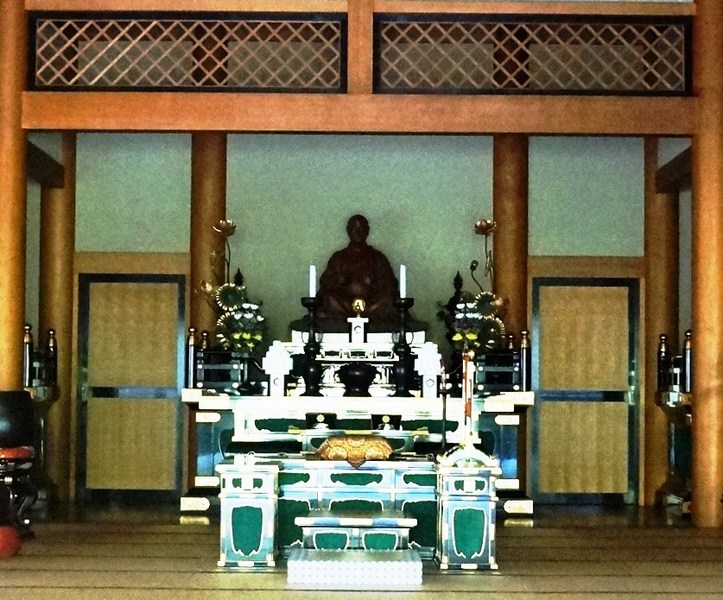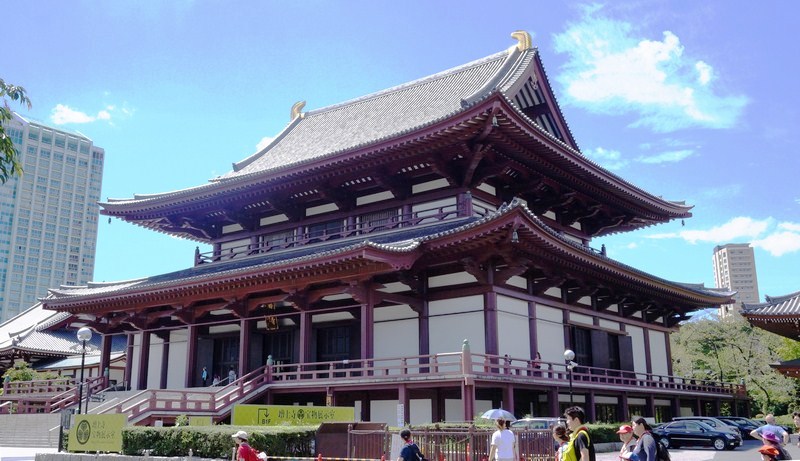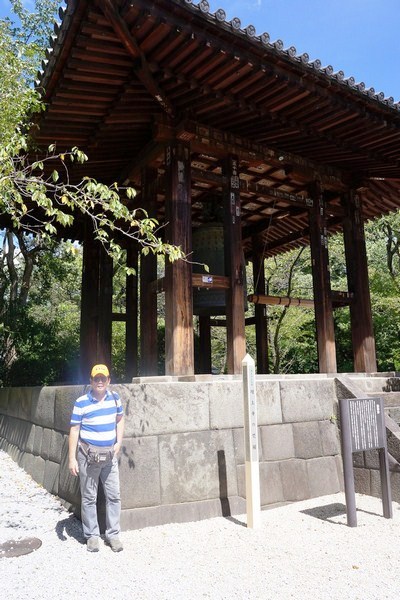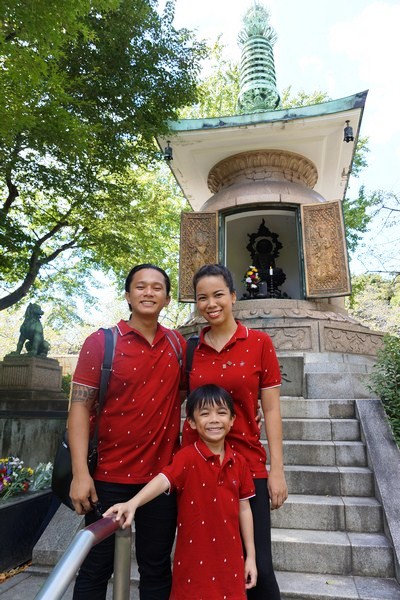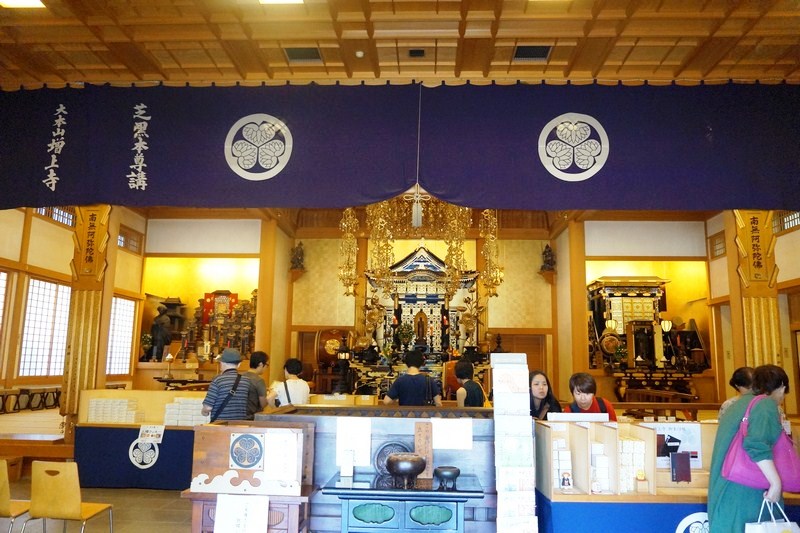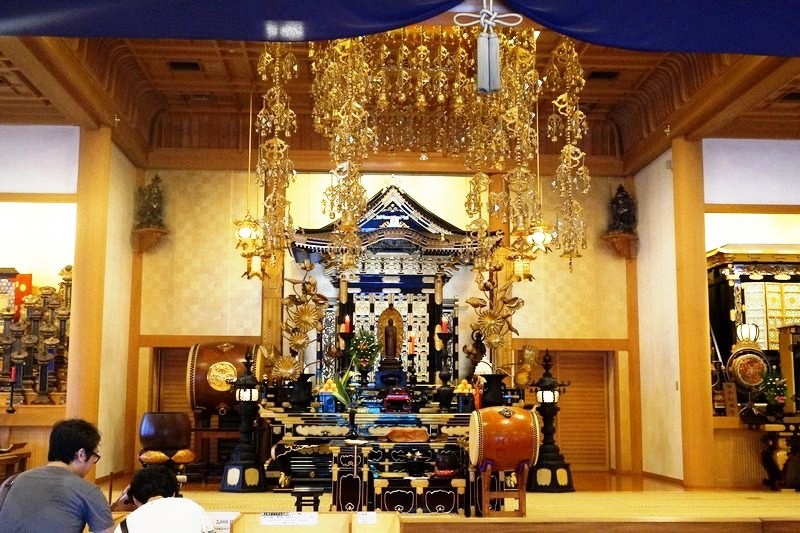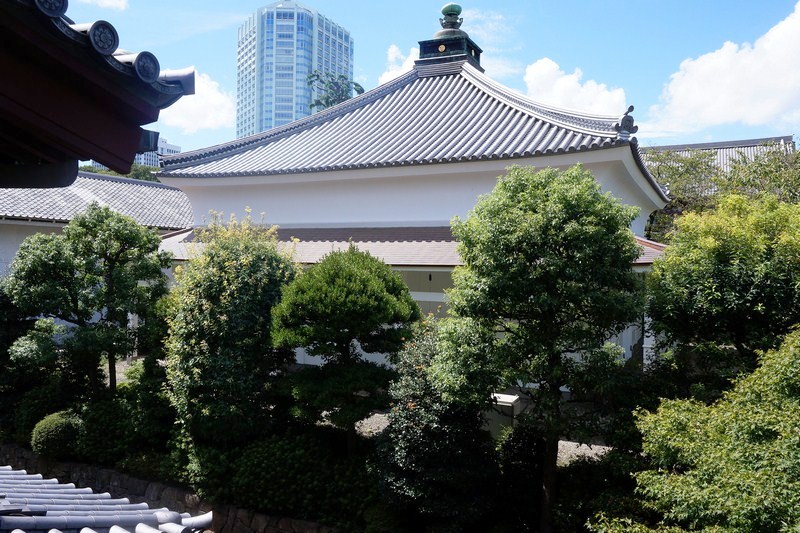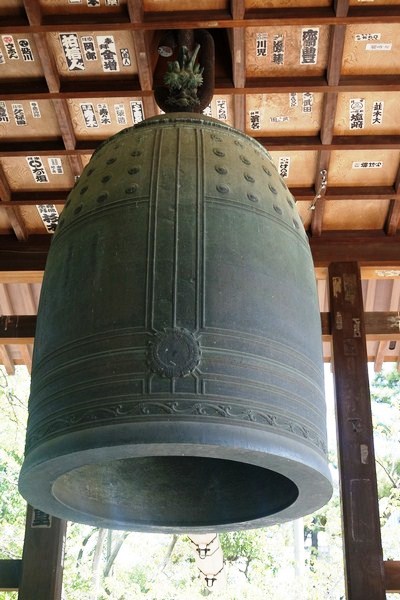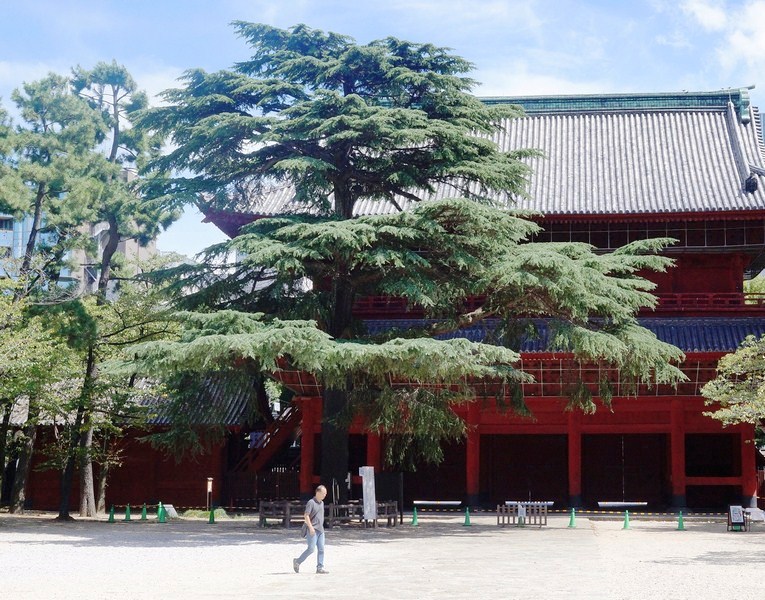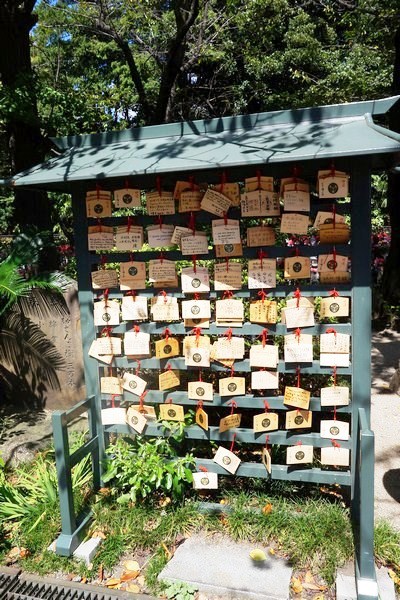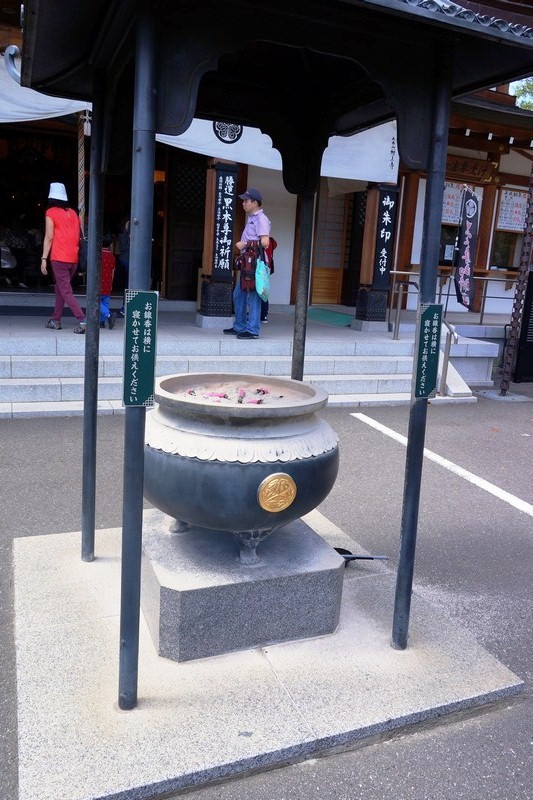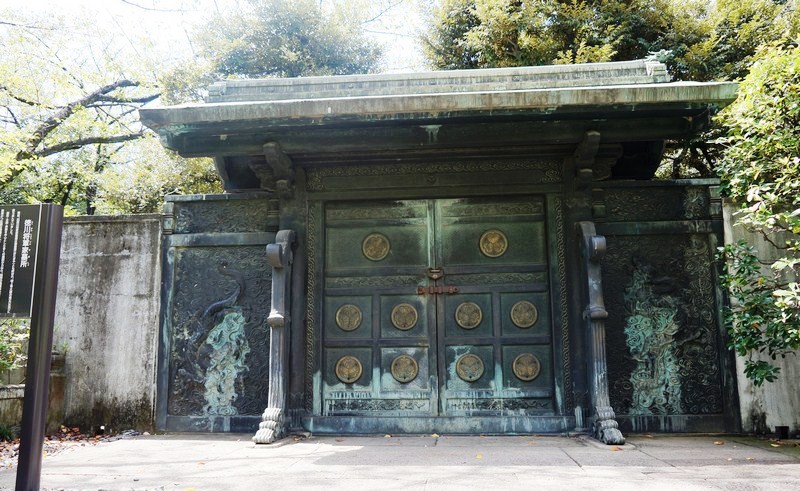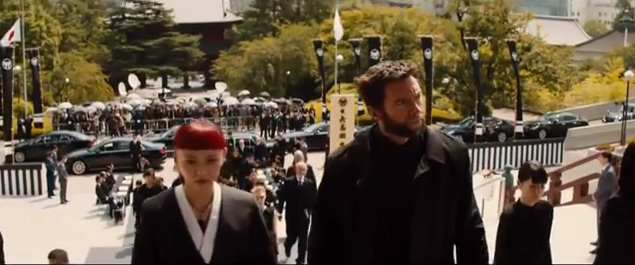Part of Cebu Blue Ocean Academy-sponsored South Korea tour
One of the highlights of our visit to the very scenic to the often very busy Seoraksan National Park, Korea’s most beautiful national park, is our tour of Sinheungsa (sometimes spelled Shinheungsa), the District Headquarters Temple of the Third District of the Jogye Order of Korean Buddhism, supervising all the temples located in the northeastern Gangwon Province Area.
Situated on the slopes of Seoraksan in Sokcho, Gangwon Province, it is translated in English as “Spirit Arising Temple,” “Divine Inspiration Temple” or “Burgeoning Temple” (referring to the budding of a lotus flower, the symbol of enlightenment).
One of two Buddhist temples within the bounds of the national park (the other is Baekdamsa), it is the main temple of the area known as Outer Sorak-san Mountain. It is remarkable for its constant changing over the centuries (it not only changed its position and name, but also the school of Buddhism to which it adhered). The temple stores numerous works of Buddhist art such as paintings, sculptures and tapestries.
Check out “Seoraksan National Park”
Many tourists hiking Seoraksan pass by this ancient Korean Zen (Seon) temple (believed to be the oldest in the world) on their way up to Ulsanbawi (peak), reached by following the wall outside Sinheungsa. They also come to this ancient temple, with its deep historical significance, because of its beautiful scenery. Other temples with the name Sinheungsa are located in Seoul, Samcheok and Icheon.
Historical accounts vary as to whether this temple was first constructed (at the site of Kensington Star Hotel) by the famed Buddhist monk Jajang-yulsa (590-658 A.D.) in 653 A.D. (the sixth year of the reign of Queen Jindeok of the Silla dynasty), first called Hyangseongsa (Temple of Zen Buddhism), or in 637 A.D. following his return from studying in Tang China.
In 698 A.D., the seventh year of King Hyoso’s (687-702 A.D.) reign, it was destroyed by fire. Three years later, in 701 A.D., Sinheungsa Temple was rebuilt by Great Master Uisang-daesa (625-702 A.D.), another famous monk and founder of a religious sect, on the site of Neunginam Hermitage (the present location of Naewonam Hermitage). He also renamed the temple, this time to Seonjeongsa Temple.
For 1,000 years, the temple blossomed in reputation but, in 1642, the temple burned down again and it was rebuilt in 1648 during the 20th year of the reign of King Injo of the Joseon dynasty. Many of the buildings built during that time are still standing, like the sanctuary, Geukrakbo-jeon Hall, Myeongbu-jeon Hall, Boje-ru Pavilion, Samseong-gak Hall, etc.
According to a legend, after most of the monks at the temple left after the 1642 fire, the Three Venerable monks Yeongseo, Hyewon, and Yeon-ok all vowed that they would rebuild the temple one day, passionately praying the gido (ritual supplication prayer every day. One day, they had the same dream in which an old silver-haired heavenly deity called Sanshin (Mountain Spirit) appeared and told them to change the location of the temple to the bottom of the gorge to prevent three big misfortunes.
Pointing to the ground where the temple is currently situated, he said, “If you build a temple here, there will be no damage from the three major disasters of fire, floods or storms.” Afterwards, this deity disappeared. Thus, the temple was re-constructed at the current location and renamed as “Sinheungsa,” meaning “the temple was blessed by God (sin) and became prosper (heung).”
During the 195-1953 Korean War, the temple was badly damaged. In 1995, the Chinese character sin of the temple’s name was changed from sin (meaning “god”) to sin (meaning “new”), in their wish that the temple will revive Buddhism again in the Yeongdong area (eastern part of the Taebaek Mountain Range).
The first structure that greeted Frank, James, Kim and I at the temple is the top heavy Iljumun Gate (or “One Pillar Gate”). After passing through this entry gate, we noticed the sharp, jagged rocks of the 1,708 m. high Mt. Seoraksan (the third highest in the country) surrounding us on all sides. After passing Iljumun , we soon came across the 14.6-m. (48-ft.) high, 108 ton Great Unification Buddha, a gilt-bronze Buddha statue called “Tongil Daebul” on the right.
The largest seated Buddha statue in the world, it is dedicated to Seokgamoni-bul (The Historical Buddha). It sits atop a 4.3-m. (15-ft.) high lotus pedestal, of the same material, making the total height of 18.9 m. (62 ft.), excluding the lightning rod and the beautiful nimbus which surrounds Seokgamoni-bul’s head. It is flanked with 16 delicately engraved panels that tell the entire path of Buddha’s enlightenment through the words of Bodhisattva, messengers of Buddha’s teaching.
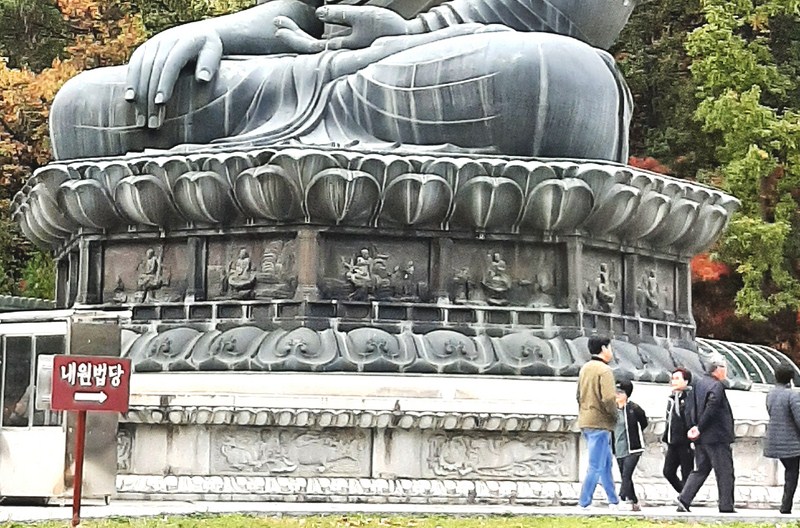
The 4.3 m. (15-ft.) high lotus pedestal flanked with 16 delicately engraved panels that tell the entire path of Buddha’s enlightenment through the words of Bodhisattva, messengers of Buddha’s teaching
This statue, serenely looking out on the amazing landscape of northern South Korea, cost 3.8 billion won (US$4.1 million) to erect, raised through the small contributions of over 300,000 anonymous donors visiting the temple over a decade in duration. The construction started in 1987 and it was only finished in 1997 when the eyes were placed on the face. The statue, less than 50 kms. (30 mi.) from the impenetrable border between North Korea and South Korea, represents the crucial wish of the Korean people for the reunification of the divided country.
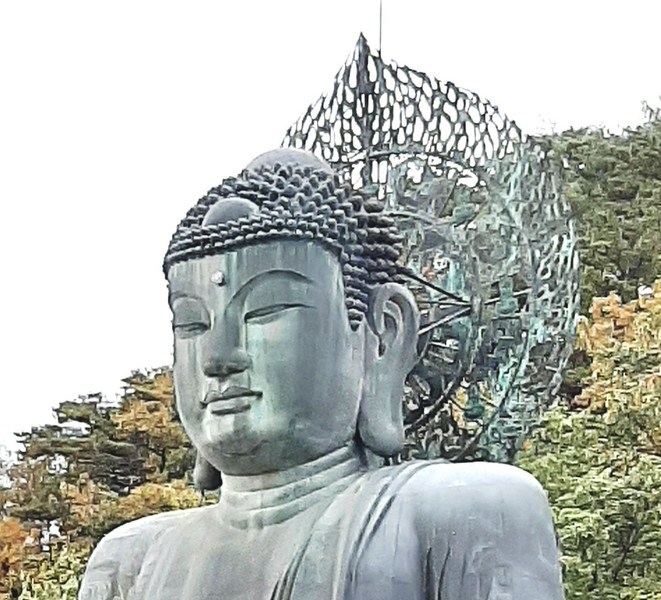
The beautiful nimbus surrounding the head of the Buddha. Also shown is the center forehead adornment, half closed eyes and slight smile
The massive bronze statue is also positioned in the “Touching the Earth Mudra” (or the “Earth Witness Mudra”) which was the pose the Buddha had when he attained enlightenment. Tongil Daebul sits with legs crossed and half-closed eyes in meditation, his lips displaying a perceptible smile. His forehead is adorned with eight 8-cm. (3-in.) stones of amber, with a single piece of jade in the center that is 10 cms. (4 in.) in diameter. The Buddha’s robust torso is draped by a flowing robe with gentle folds, revealing the right shoulder. The hands of Tongil Daebul are positioned in the mudra, symbolizing the “enlightened one.”
Contained within the hollow statue are three pieces of the Buddha’s sari, crystallized remains collected after his cremation, donated by the Myanmar government, and the Tripitaka, the original Buddhist scriptures. The three sari are backed by three incarnations of Gwanseeum-bosal (The Bodhisattva of Compassion). The statue is fronted by beautiful bronze incense burners and lanterns. A great number of people come here to pray for their wishes.
In front of the Tongildae-bul are three pathways. The left pathway goes to Biseondae, a summer house where, according to legend, the fairy Ma-go rose to heaven. The middle pathway goes to Ulsanbawi, a natural big stone ball, and passes Naewon-am and Gyejo-am. It is also the way to the green bridge Sesim-gyo. The right pathway goes to the white bridge Sesim-gyo.
We finally had your fill of this amazing statue (which took us some time) and we made our way up a path, for two to three hundred meters, then crossed a ravine beyond the statue via a newly built, closed spandrel arch bridge to the right called Hyeonsu-gyo. After crossing the Hyeonsu-gyo Bridge, the long stone wall of the main temple grounds awaited us.
We entered the temple through the rather boxy Cheonwangmun (or Sacheonwangmun) Gate which mark’s the entrance of the temple’s boundaries. It houses some excellent examples of the Four Heavenly Kings.
These four Cheonwang (king) statues, believed to be Buddha’s protectors and evil-fighters, are placed on either side – Jiguk Cheonwang (“King of the East”) with a sword, Damun Cheonwang (“King of the North”) with a lute, Gwangmok Cheonwang (“King of the West”) with a tower, and Jeungjang Cheonwang (“King of the South”) with a dragon.

L-R: Damun Cheonwang (“King of the North”) with a lute, and Jiguk Cheonwang (“King of the East”) with a sword
In contrast with the big, generous smile of Tongil Daebul, the intimidating expressions of these four Cheonwang (king) statues welcome all those that dare enter the temple grounds.
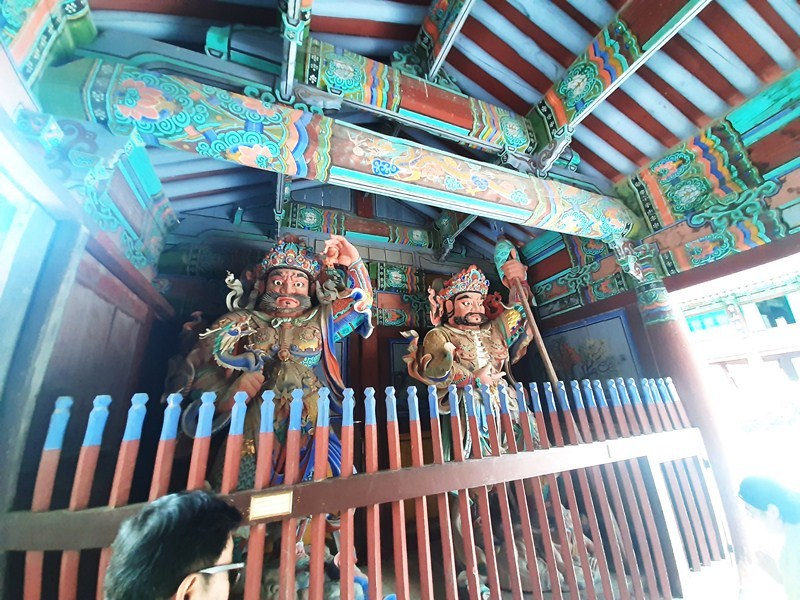
L-R: Jeungjang Cheonwang (“King of the South”) with a dragon, and Gwangmok Cheonwang (“King of the West”) with a tower
To enter the main temple courtyard, we had to pass through the low-lying Boje-ru Pavilion, along a wooden building on stilts that acts as a screen that hides the rest of the inner portion of the temple grounds at Sinheungsa Temple.
We had to watch our heads so that we don’t smack it up against the ceiling as we passed under it.
Straight ahead is the Geukrakbo-jeon (“Precious Building”) Hall (also called Kukrobojeon), the Provincial Tangible Cultural Property #14 which acts as the temple’s main hall. Its exterior walls are adorned with a colorful set of Shimu-do, Ox-Herding Murals that describes the practicing process in a mountain. The stairs leading up to the hall are decorated with some ancient Gwimyeon reliefs.
The central chapel of Geukrakbo-jeon, located beside Samseong-gak, is Gangwon Province Tangible Cultural Property 14. It has an octagonal roof, three front rooms, two side rooms and also has a special structural pattern and a great variety of design. The canopy over the statue is the octagonal Bogung type of inner structure carved with a dragon. The flower figure window is very interesting.
The interior is elaborately decorated with a triad of statues (Korean Treasure #1721) centered by Amita-bul (The Buddha of the Western Paradise) on the main altar. This statue is joined on on the left side by Gwaneum-bosal (Avalokitesvara, the Merciful Goddess” or the “Power for Amita-bul”) and Daesaeji-bosal (Mahasthamaprapta, the “Wise Goddess” or “The Bodhisattva of Wisdom”) on the right side.
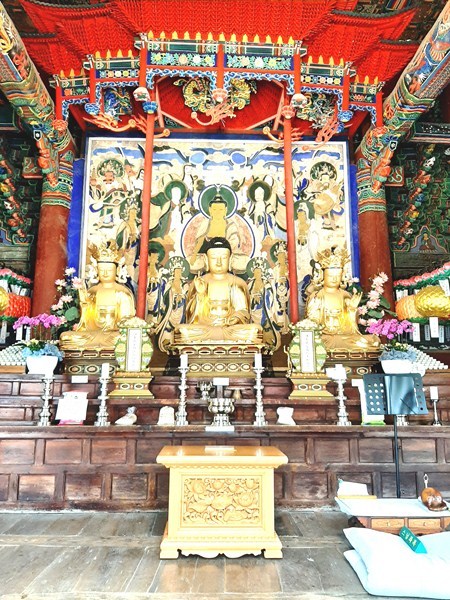
Amita-bul (The Buddha of the Western Paradise), on the main altar, flanked by Gwaneum-bosal (Avalokitesvara, the Merciful Goddess” or the “Power for Amita-bul”) on the left, and Daesaeji-bosal (Mahasthamaprapta, the “Wise Goddess” or “The Bodhisattva of Wisdom”) on the right.
This triad, created by monk Muyeom (along with the monk Hyeonjin, they were the leading monk sculptors of the mid-17th century), dates back to 1651. The proportionate sizes of the three statues, seemingly simple, yet refined in appearance, speaks to the harmony of these Buddhist statues.
A pair of halls are located to the left rear of the Geukrakbo-jeon Hall. The first, Myeongbu-jeon (Judgment Hall), houses, under a beautiful red canopy, a statue of Jijang-bosal (the Bodhisattva of the Afterlife). One of the most popular Bodhisattva shrine hall at a Korean temple, it’s meant to symbolize a “dark court” or “underworld.” It is one of the more unique looking buildings in a temple because of its gruesome depictions of the afterlife, the uplifting paintings of salvation, the ominous judges and the serenely redemptive Jijang-bosal.
The triad (Korean Treasure #1749) on the main altar of the Myeongbu-jeon Hall, which is centered by Jijang-bosal was, like the triad inside the Geukrakbo-jeon Hall, also made by the monk Muyeom in 1651. Interestingly, various artists also participated in the production in separate procedures of the statues, including the molding, gilding and coloring of the three statues.
To the rear of Myeongbu-jeon Hall is the Samseong-gak (“Three Saints”) Hall (also called Chilseong-gak), a shamanic shrine hall. It houses interesting, masterfully executed and vibrantly painted murals including images of of three Korean shaman deities – Chilseong (The Seven Stars), Dokseong (“The Lonely Saint”) and Sanshin (“The Mountain Spirit”), the modern Sanshin Taenghwa. Its budo-won (stupa garden), containing 2 monuments, isdesignated as Provincial Tangible Cultural Property #115.
The temple also participates in the popular Temple Stay program which allows tourists looking to experience Zen meditation and asceticism to spend, for a fee, two or three days living the typical temple life of a Korean Buddhist monk, doing activities such as baru gongyang (communal Buddhist meal service), ceremonial service involving chanting, 108 bows aimed at removing 108 earthly desires, as well as programs of making a lotus lantern and Buddhist rosary. The experience includes interpretations in Chinese, Japanese and English. Visitors who donate money to the temple are given a new roof tile to write his wish on.
Between Jeokmukdang and Beomjongru is an amusing figure of a turtle shooting water from its mouth. The sweet mineral water from this fountain is said to remove fatigue and provide freshness for those who drink from it.
On the opposite side of the Kensington Star Hotel, at Hyangseongsa Temple Site, is a 3-story pagoda (National Treasure 443), an important cultural property and the northernmost extant Shilla Kingdom stone pagoda which demonstrates the traditional style of the Shilla period. Originally a nine-storey stone tower made of granite, only three storeys remain. When it was repaired, workers found a silver case for enshrining the sarira (bone fragments of Buddha, but it was empty.
Sinheungsa: 1137 Seoraksan-ro, Sokcho-si, Gangwon Province, South Korea. Open 24 hours. Tel: +82 33-636-8001 and 033-636-7393. Website: www.sinheungsa.krwww.sokchotour.com. Admission to Seoraksan National Park, where Sinheungsa Temple is located, is 2,500 won. Sinheungsa Temple itself is free.
How to Get There:
By Car: from Seoul, take National Road No. 6 and then National Road No. 44 in Yangpyoung. After passing Hongcheon, Inje and Hankyeryoung Service Area, join National Road No. 7 in Yangyang. Drive for 11.4 kms. to Naksan and soon you will reach Mulchi 3-way junction. Go left, following the sign to Seolakdong. Drive another 10.9 kms. and you will arrive in the parking lot at the entrance of Mt. Seolak.
From Inje, you can also take National Road No. 46 toward Misiryoung, not toward Hankyeryoung Service Area. If you drive on the road for about 16.2 kms., you will reach the Yongdae 3-way junction. Make a right turn onto Lcal Road No. 466 and go another 13.6 kms. to Misiryoung. There is a 3-way junction with a sign for “Dae-myoung Seolak Leisure Town.“ From there, drive for 4.6 kms. toward Sokcho and you will get to ”Seokcho Plaza Resotel.” Turn right and you will see “Cheoksan Hotspring” and, a little farther up, the hotel complex of Seolakdong and the parking lot at the entrance of Mt. Seolak.
By Public Transport: From Seoul Express Bus Terminal (Express Bus Terminal St, Subway line No. 3 or 7, Orange or Dark green line), take the Express bus (available many times a day) to Sokcho or to the Sogongwon (small park) of Mt. Seolak. Local bus No. 7, from downtown Sokcho to Seolakdong, runs every 10 min. and it takes about half an hour. From Sokcho, you’ll need to take a bus (which leaves every ten minutes) bound for Seoraksan National Park. The bus ride takes around 20 to 25 minutes and the bus drops you off at Sogongwon, the entrance of the park. From here, you’ll need to walk about ten minutes to get to Sinheungsa Temple.
Cebu Blue Ocean Academy: Building 5, EGI Hotel and Resort, M.L. Quezon National Highway, Looc, Maribago, Lapu-Lapu City, Cebu 6015, Philippines. Tel: (032) 888-9868. E-mail: pinesbaguio@gmail.com. Website: www.cebublueocean.com. Baguio City (Benguet) Sister School: Pines International Academy, Romel Mansion, 3 Ignacio Villamor St., Brgy. Lualhati, Baguio City, Benguet, Philippines. Tel: 1 754-255-9818. E-mail: pinesbaguio@gmail.com. Website: www.pinesacademy.com.

